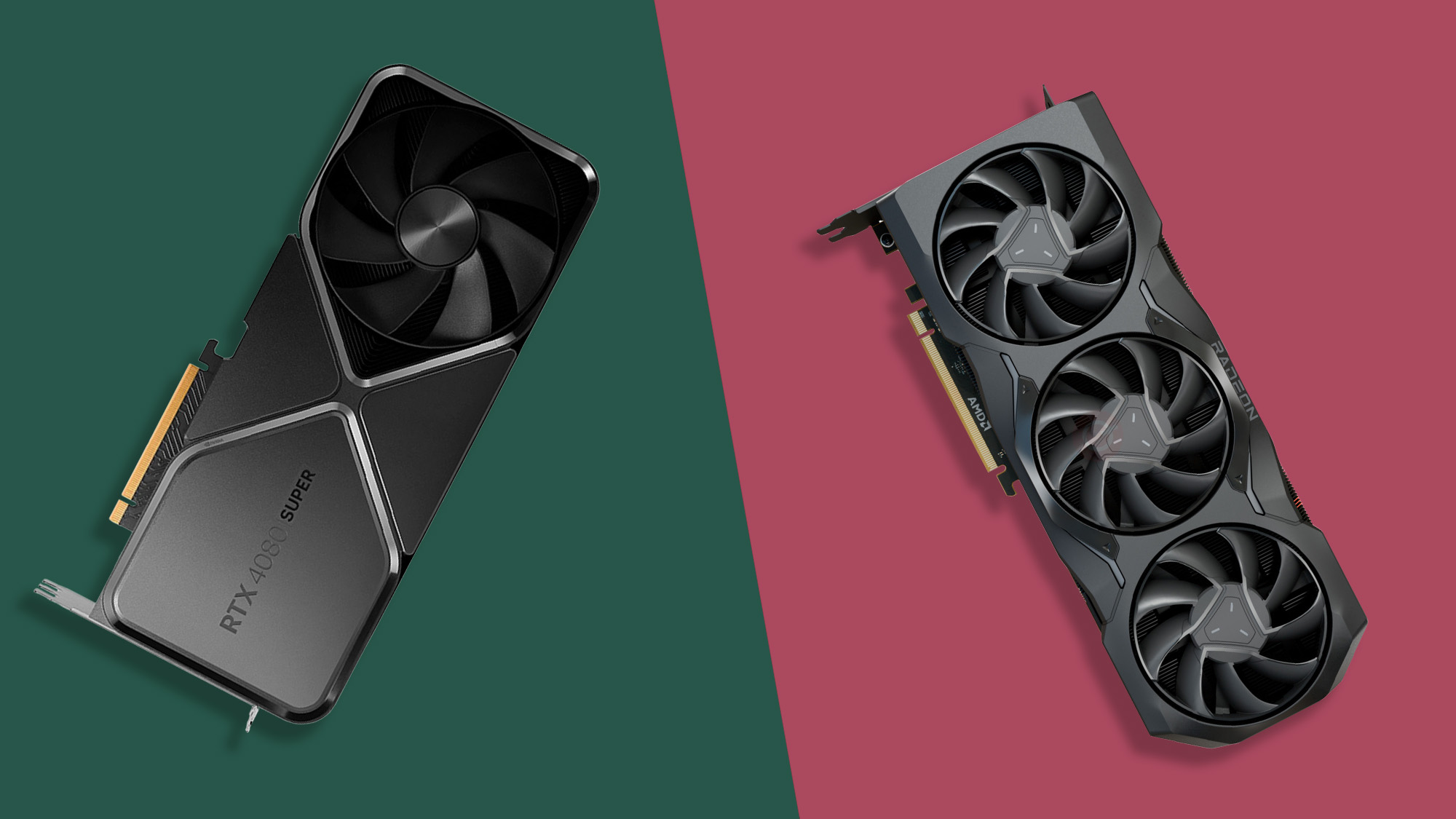
Compute Units: 80
Shaders: 10,240
Ray processors: 80
AI/Tensor processors: 320
Base clock: 2,295 MHz
Boost clock: 2,550 MHz
Memory clock: 1,438 MHz
Memory type: GDDR6X
Memory pool: 16 GB
Memory speed (effective): 23 Gbps
Memory bandwidth: 736.3 GB/s
Bus interface: 256-bit
TGP: 320W
Power connector: 1 x 16-pin
Slot width: Triple
Nvidia's latest is easily the best premium graphics card on the market, second only to the Nvidia RTX 4090 in terms of performance.
For
- Best-in-class performance
- Cheaper than RTX 4080
- Gorgeous finish
Against
- Very expensive
- Power hungry
Compute Units: 96
Shaders: 6,144
Ray processors: 96
AI/Tensor processors: 192
Base clock: 1,900 MHz
Boost clock: 2,500 MHz
Memory clock: 2,500 MHz
Memory type: GDDR6
Memory pool: 24 GB
Memory speed (effective): 20 Gbps
Memory bandwidth: 960 GB/s
Bus interface: 384-bit
TGP: 355W
Power connector: 2 x 8-pin
Slot width: Dual
AMD's flagship graphics card, the RX 7900 XTX is an absolute beast of a GPU with 24GB VRAM, DisplayPort 2.1 output for 8K@165Hz, and more.
For
- Phenomenal performance
- Can fit in most cases
- No 16-pin connector
Against
- Not great creative performance
- Ray tracing lags Nvidia
- Power hungry
Deciding between the Nvidia RTX 4080 Super vs AMD RX 7900 XTX gets a little more complicated at this point. Both the high-end Ada refresh and the RDNA 3 flagship remain among the best graphics cards for gaming at aggressive prices compared to their competition, but we now have to factor in the more recent releases of the RTX 5080 and the RX 9070 XT, which have effectively replaced these two models.
Despite the successors hitting the scene, both the RTX 4080 Super and RX 7900 XTX are among the best 4K graphics cards that money can buy, more than a year and almost three years, respectively, since these two GPUs were introduced.
It's not just gamers that can benefit from their prowess, as they're armed with enough VRAM for creatives to be able to push their projects as well. Considering both can commonly be found under $999 (and are still widely available), there's life in Ada and RDNA 3 yet.
We know that investing in a high-end graphics card is an investment, and that's why we also recommend some further reading before you come to your own decision.
We've compared the RTX 4080 Super vs RTX 5080 so you can see whether the jump from Ada to Blackwell is worth it for you based on their price, specs, and performance. Similarly, you can see who comes out on top out of the current RDNA 4 models with our AMD RX 9070 XT vs 9070 feature as well.
RTX 4080 Super vs RX 7900 XTX: Price
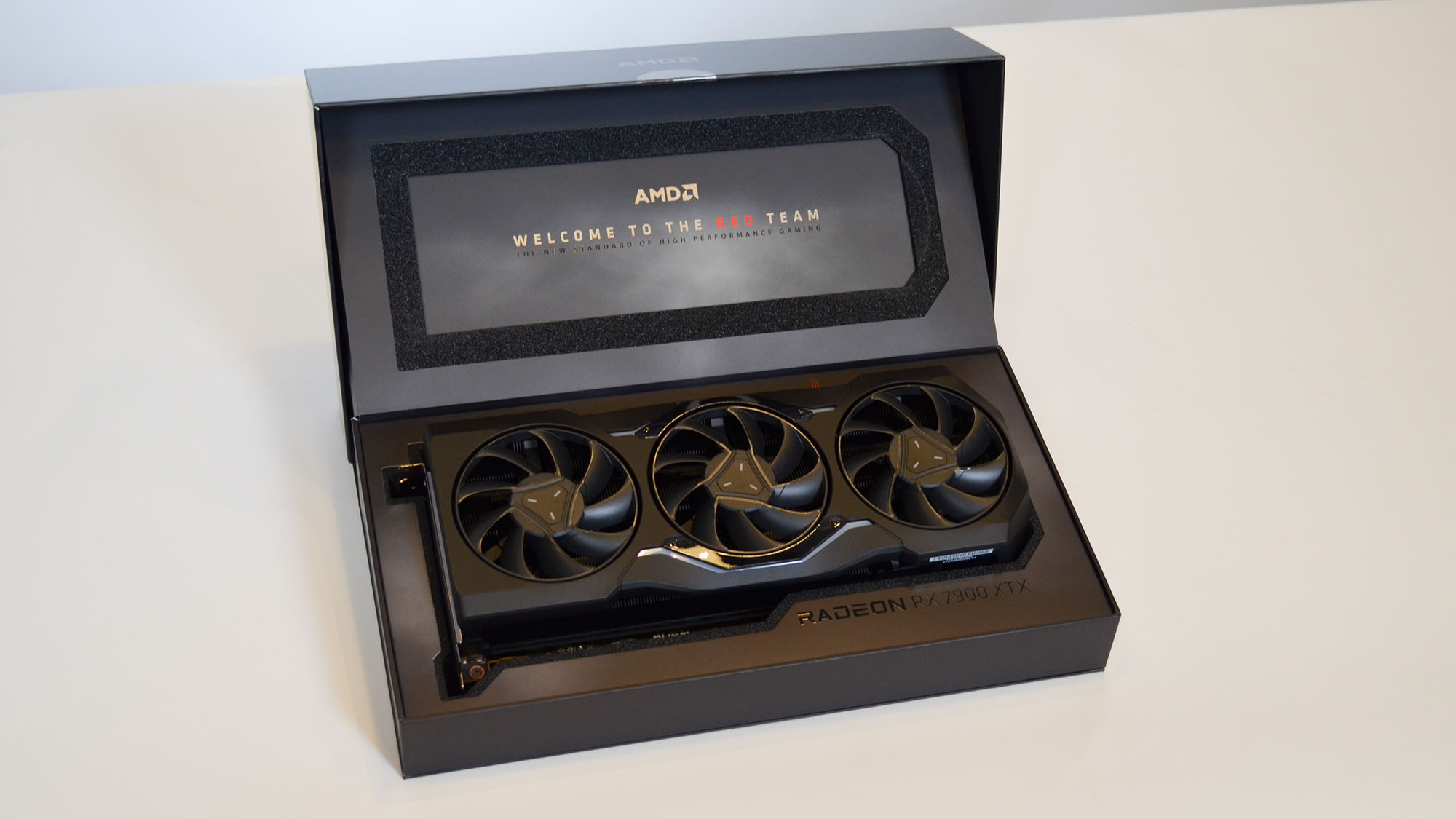
One of the most interesting factors regarding the RTX 4080 Super vs RX 7900 XTX is the pricing of the two high-end video cards. That’s because the recently-released RTX 4080 Super is priced identically to the MSRP of the RX 7900 XTX.
Both GPUs start at $999.99 (about £899 / AU$1,800). This is interesting because Team Green is firing back at Team Red by dropping the original RTX 4080’s obscene $1,199 (about £1,080, AU$1,740) MSRP.
It’s a blow to the aggressive pricing of AMD’s flagship graphics card for sure, but not quite the death knell it could have been. That’s because you can frequently find the RX 7900 XTX below MSRP from partners such as Sapphire, PowerColor, and XFX.
Still, if we take the two manufacturers’ prices into account, there’s no clear winner, and for that reason, we have to tie.
- Winner: Tie
RTX 4080 Super vs RX 7900 XTX: Design
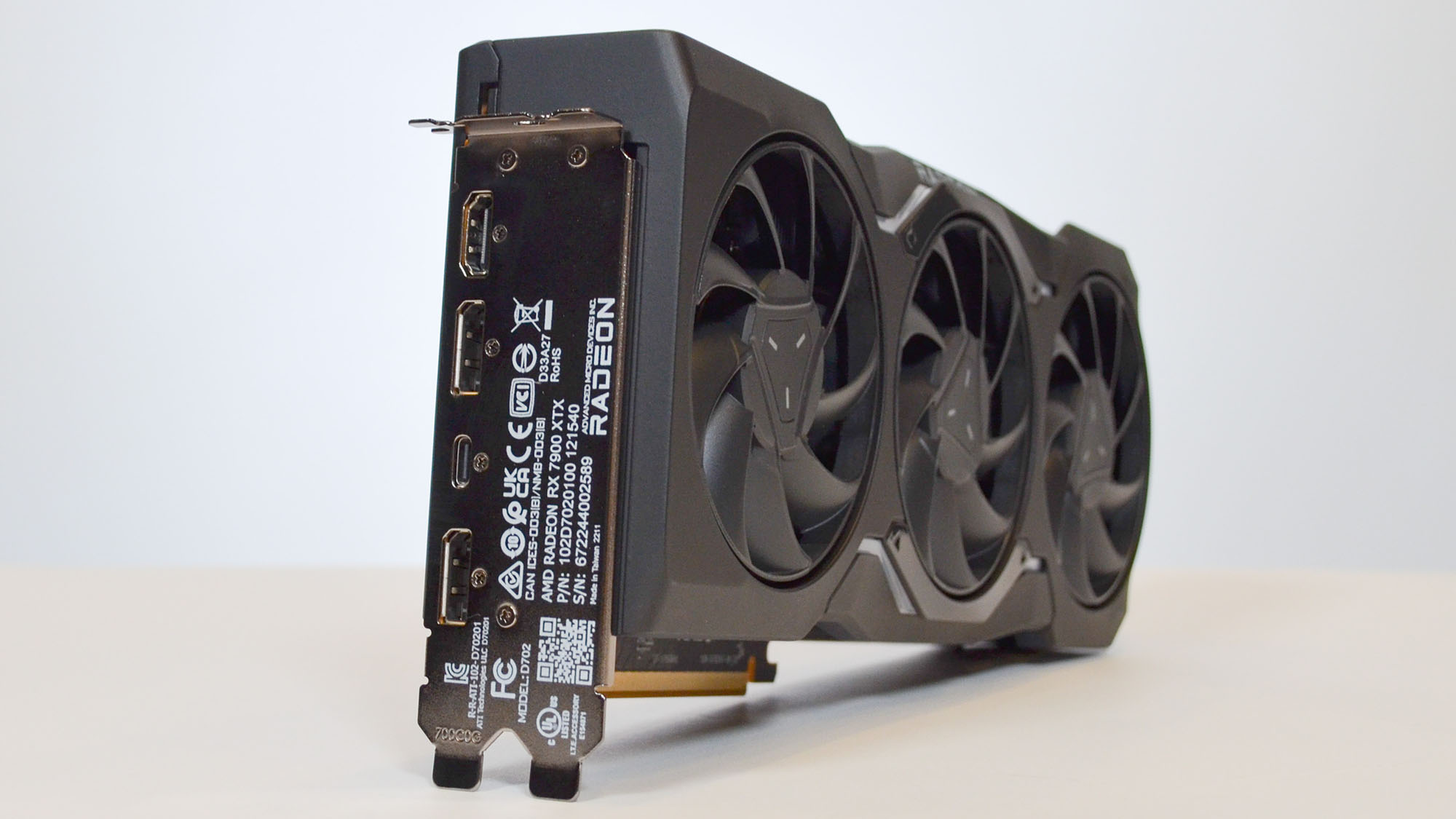
Taking the respective Founders Edition and Reference cards into account, we can see that Nvidia and AMD had very different design philosophies when developing their top end cards.
Little has changed with the RTX 4080 Super compared to its predecessor as for as its physical presence. It’s still a 3-slot GPU that measures in at 11.9 x 5.3 inches, and the partner cards can be bigger. In contrast, Team Red went with a sleeker approach as its flagship is a 2.5 slot graphics card with a smaller 11.2 x 4.3 inches.
Nvidia is once again relying on a proprietary power connector, a 16-pin adapter, while AMD has kept things straightforward, as the XTX only uses 2x 8-pin PCIe connectors.
That means that the AMD reference card is considerably sleeker and more convenient than Nvidia’s Founders Edition model, but your mileage may vary when factoring in partner variants.
On the technical front, the RTX 4080 Super features a total of 10,240 CUDA cores (a slight bump up from the base RTX 4080’s 9,728 CUDA cores) and is built upon the AD103 die with 16GB GDDR6X memory on a 256-bit memory bus.
In contrast, the RX 7900 XTX consists of 6,144 stream processors and is forged on Navi 31 silicon. It features 24GB GDDR6 VRAM on a 384-bit memory bus. The trade-off here is a lower core count with a higher amount of slower memory and a wider memory bus.
This extends to the bandwidth, with the former clocking in at 736 GB/s and the latter leading with 960 MB/s.
- Winner: Tie
RTX 4080 Super vs RX 7900 XTX: Performance
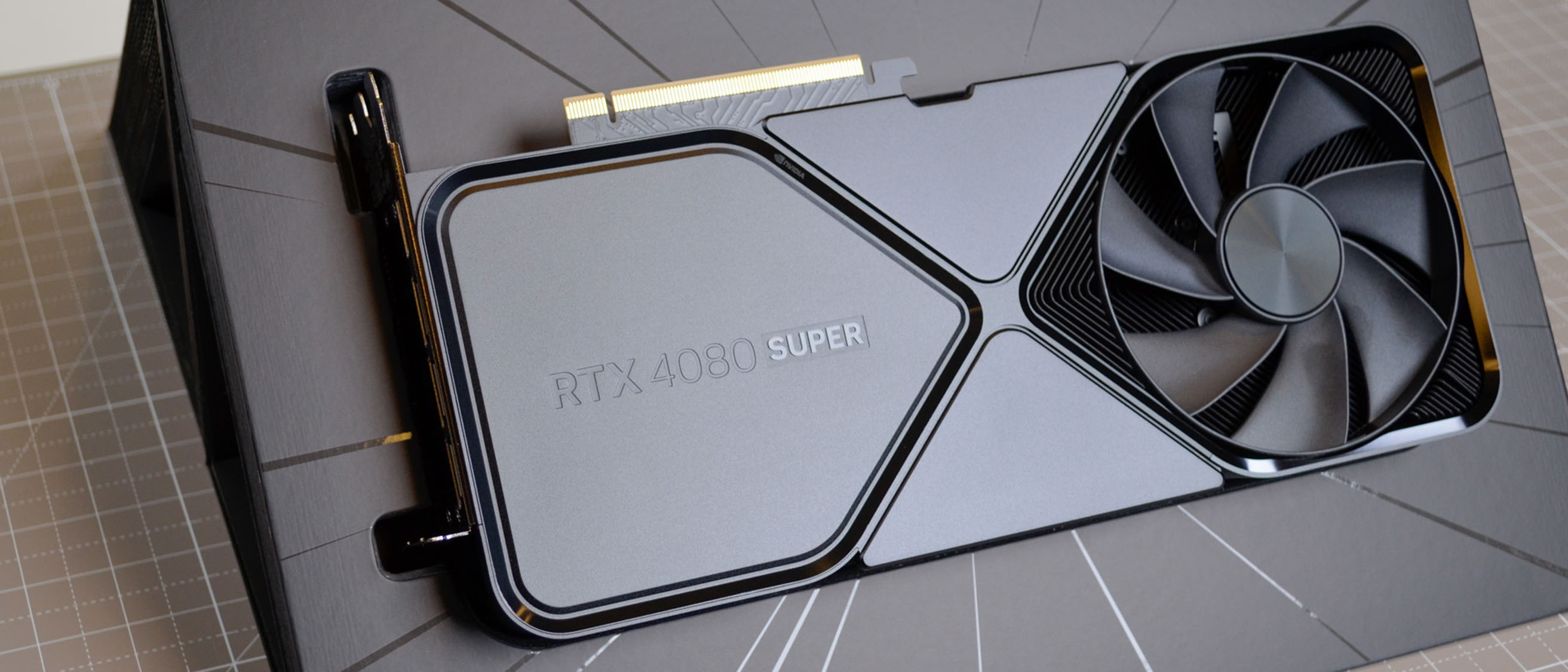
In our industry standard synthetic benchmarks, the recently released RTX 4080 Super holds up valiantly against the RX 7900 XTX but doesn’t quite pull ahead across the board.
There are exceptions, of course, with the Team Green GPU taking the lead in 3DMark’s Night Raid, Port Royal, and Wildlife Extreme. The most impressive lead was with the PassMark 3D graphics overall score.
However, Team Red’s flagship wins out in Sky Diver, Fire Strike Extreme, and GeekBench 6 Compute (Vulkan).
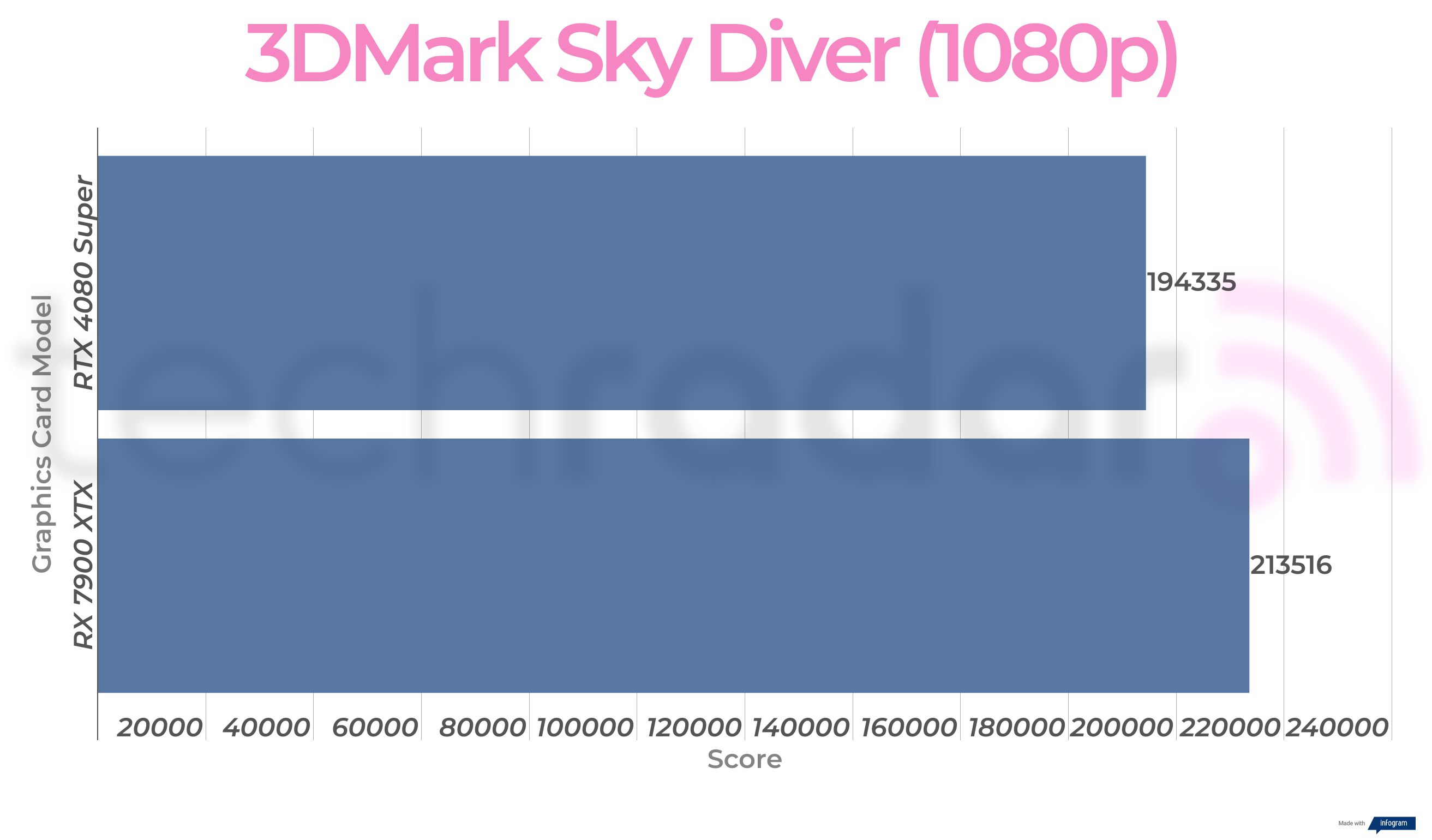
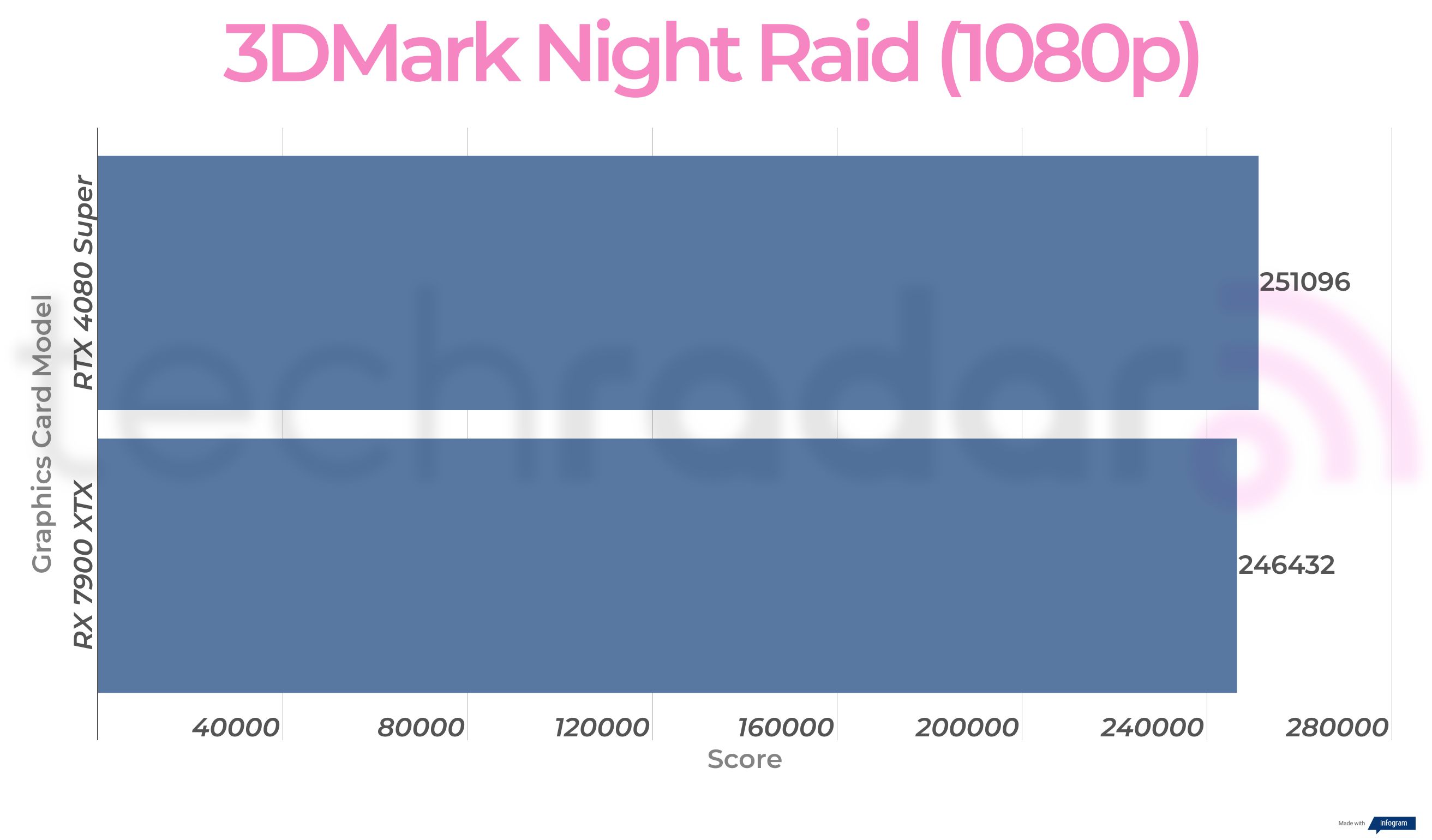
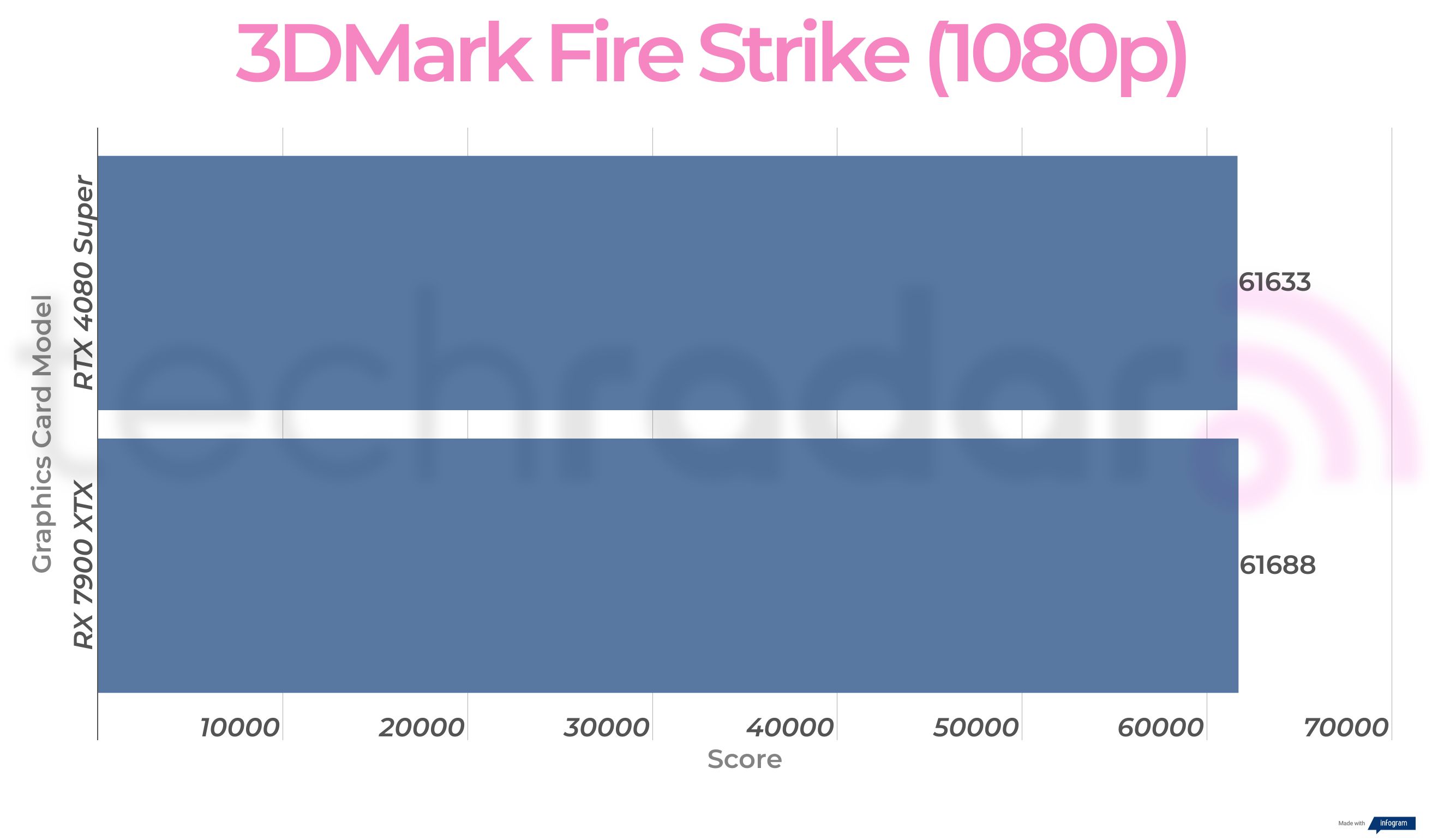
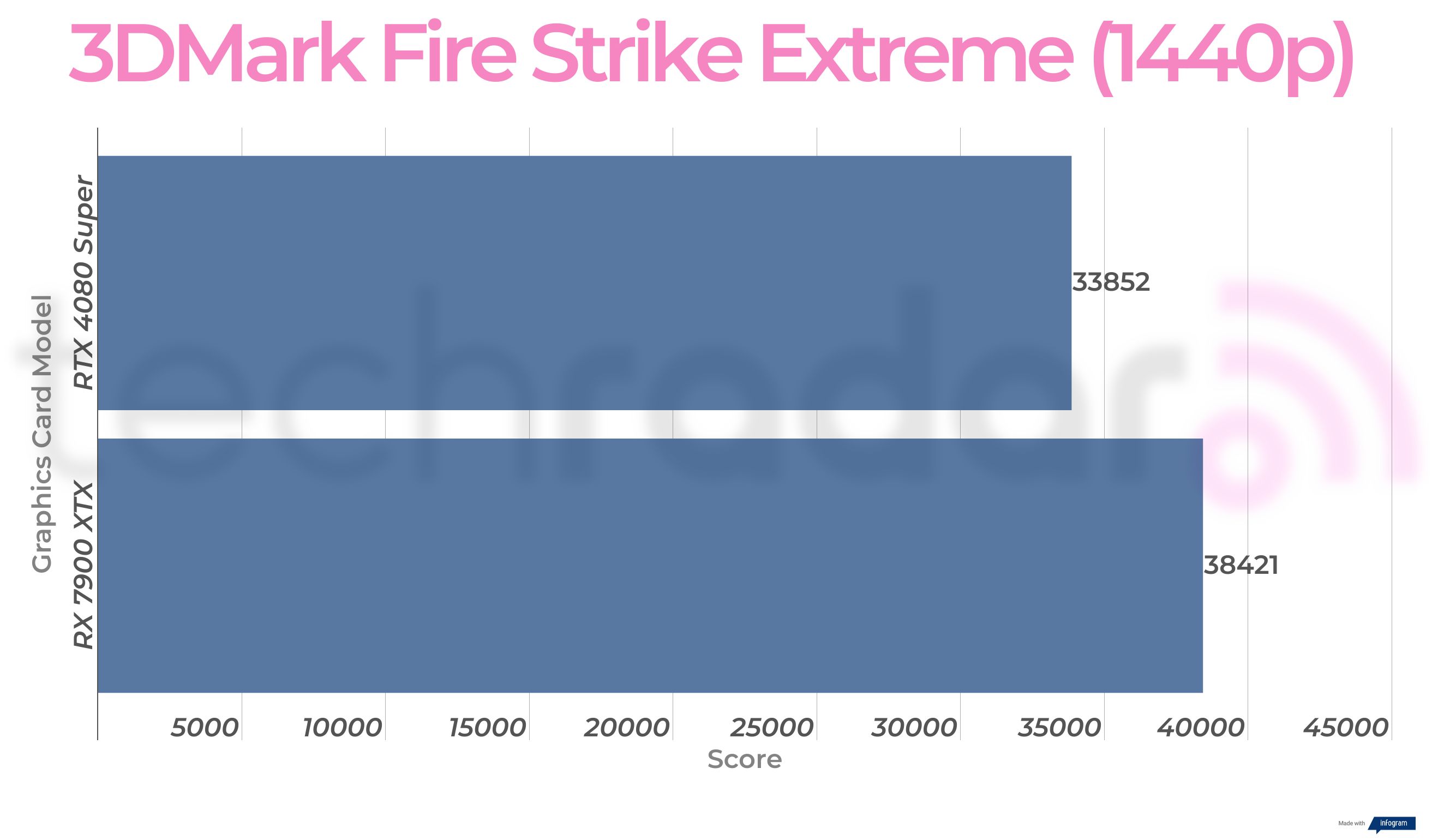
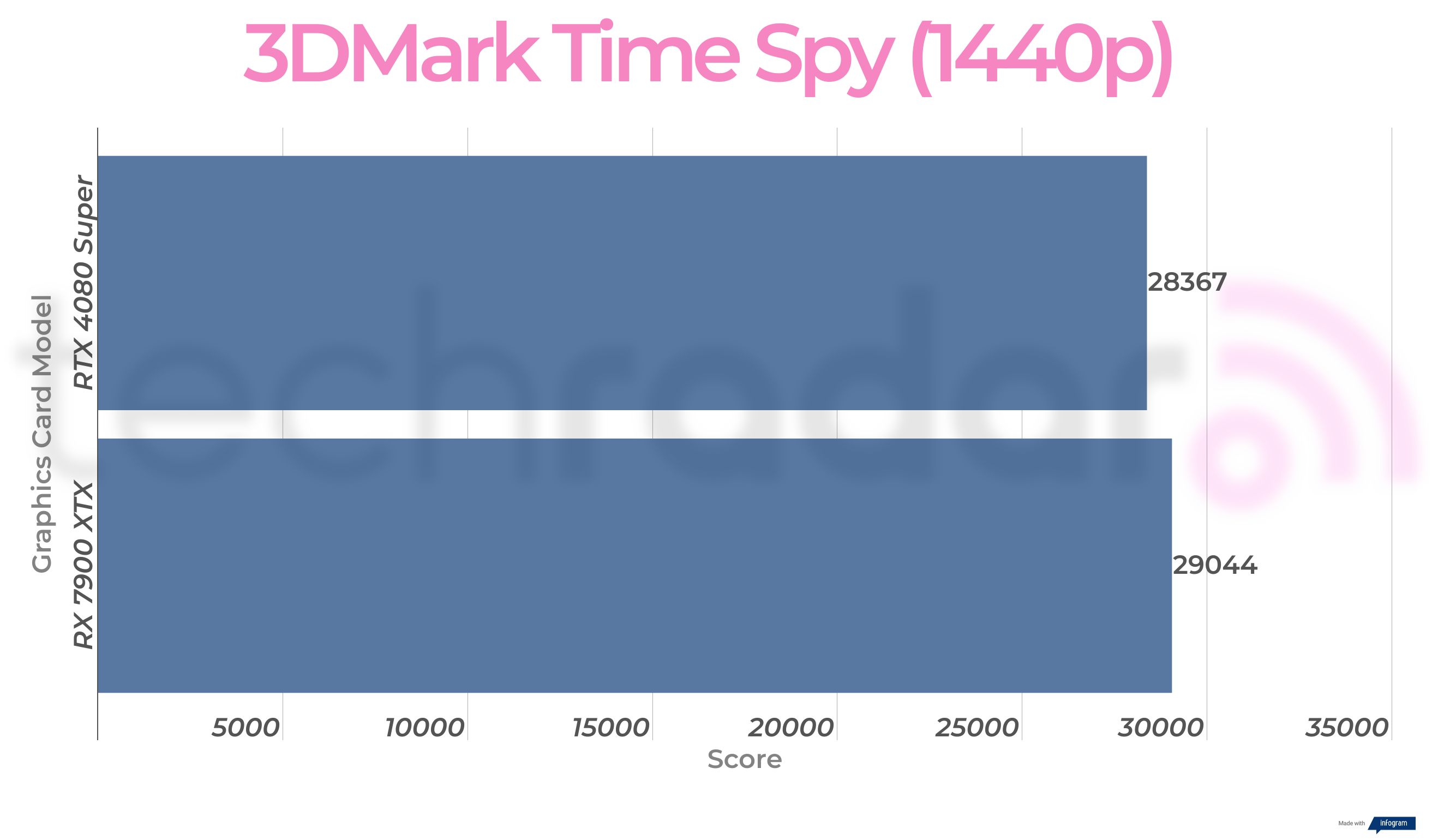
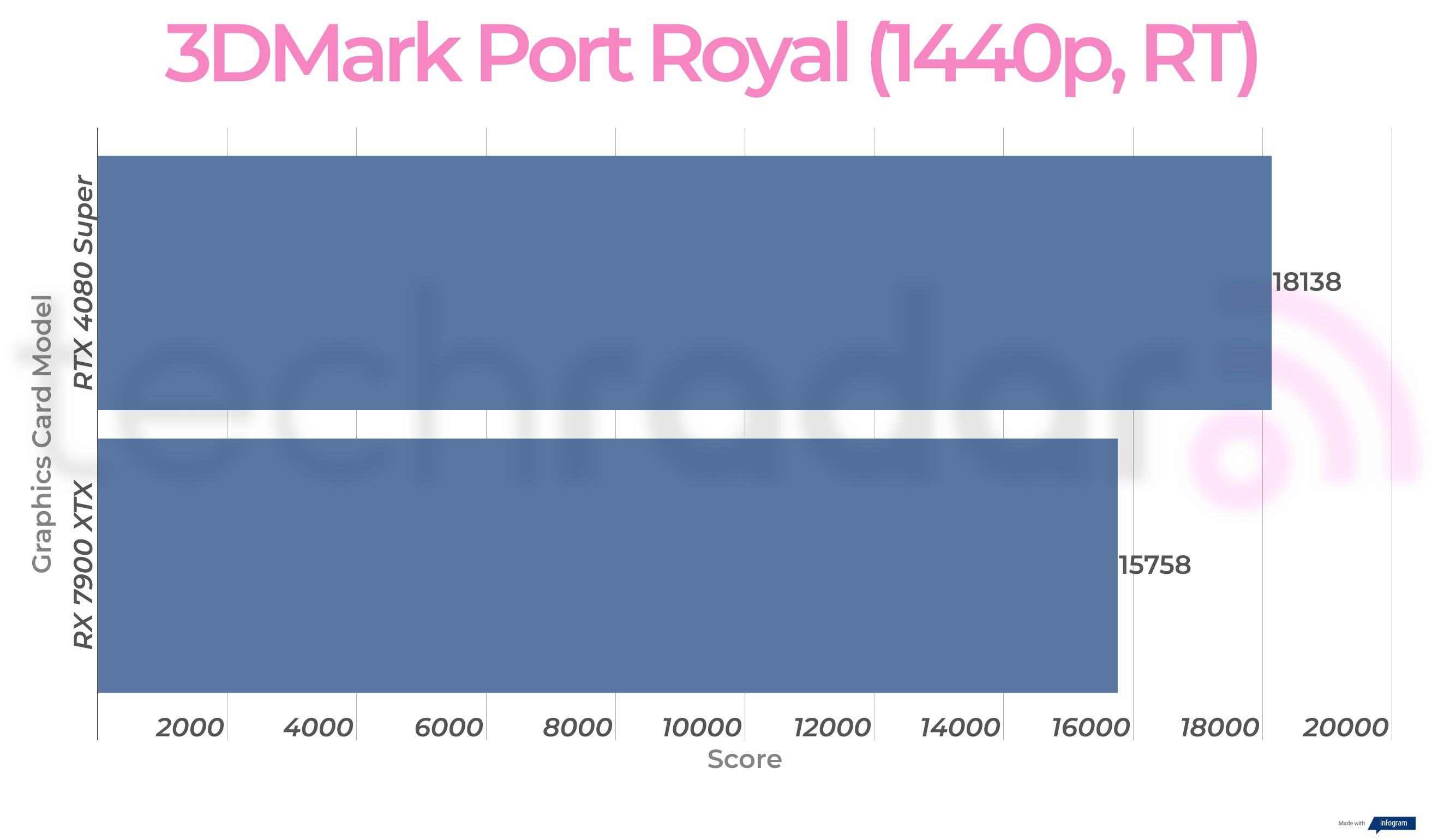
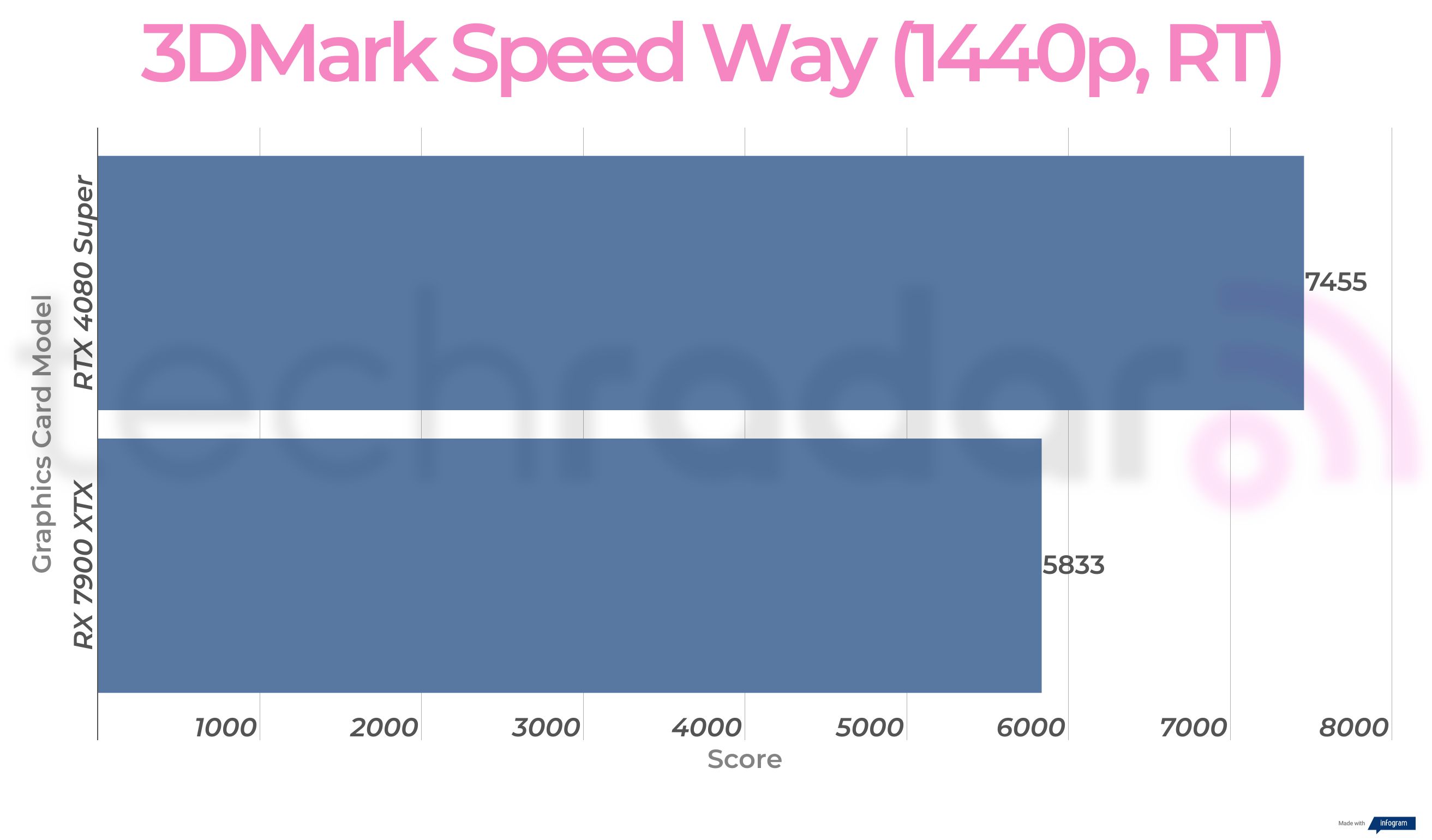
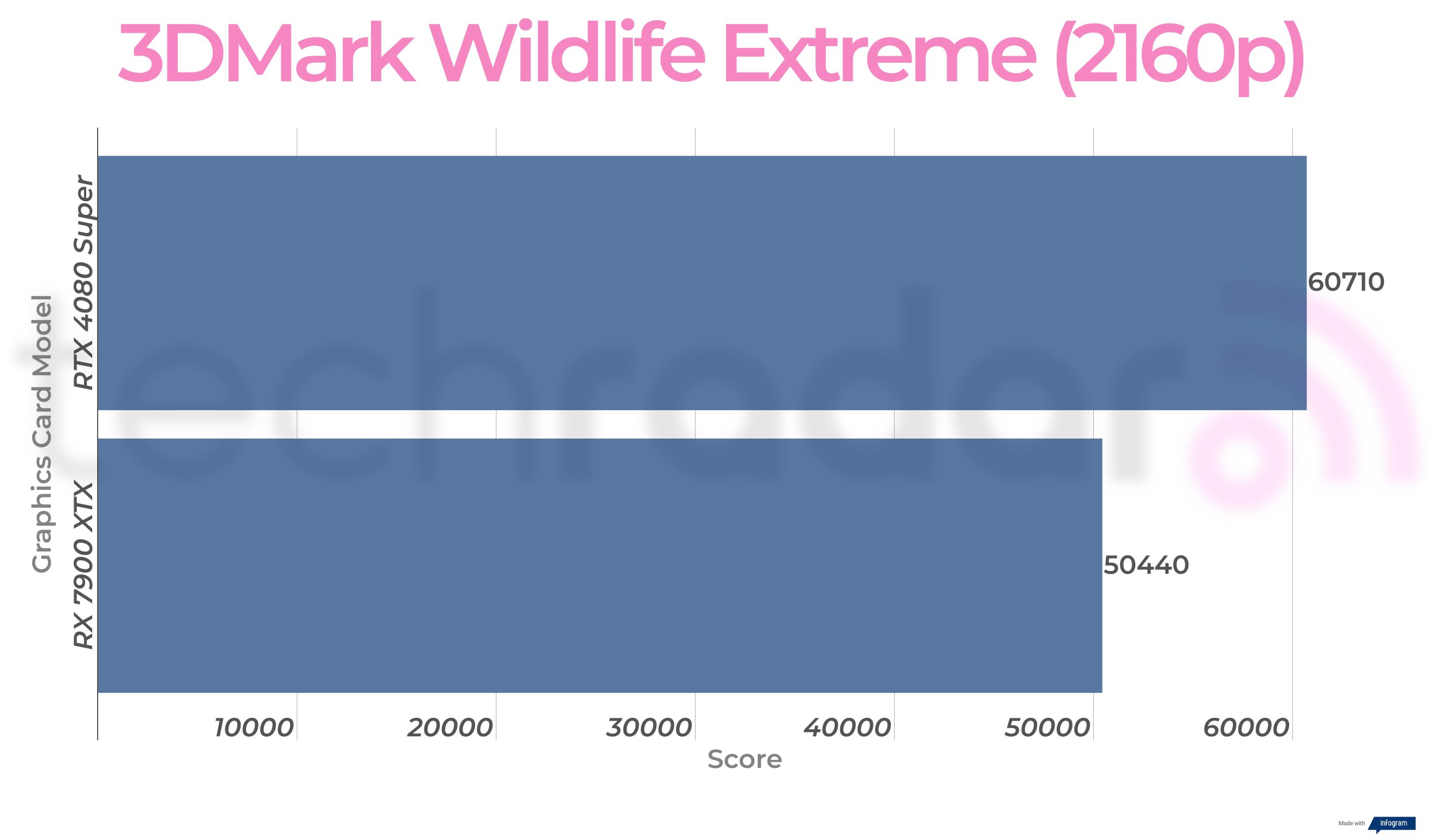
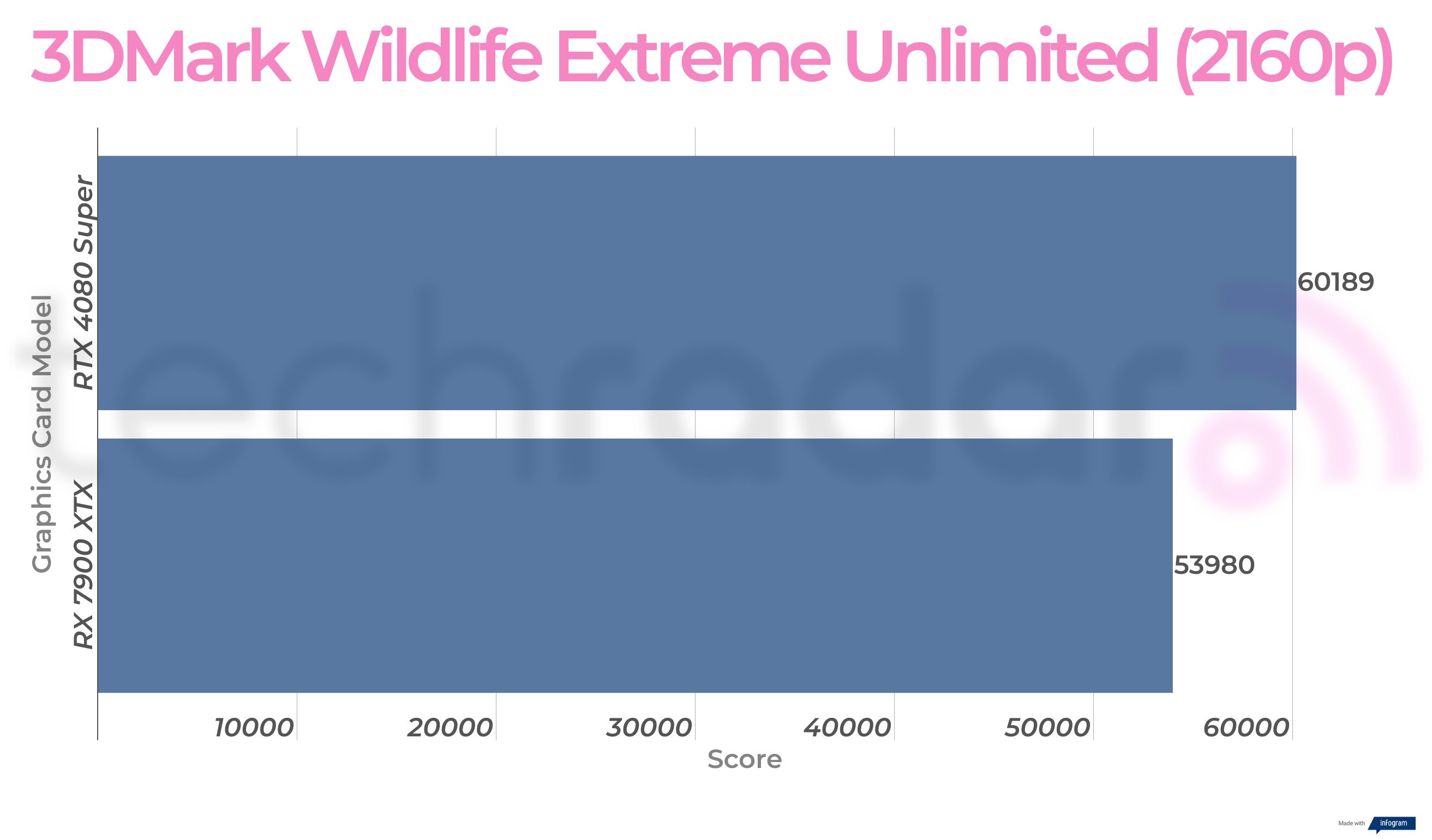

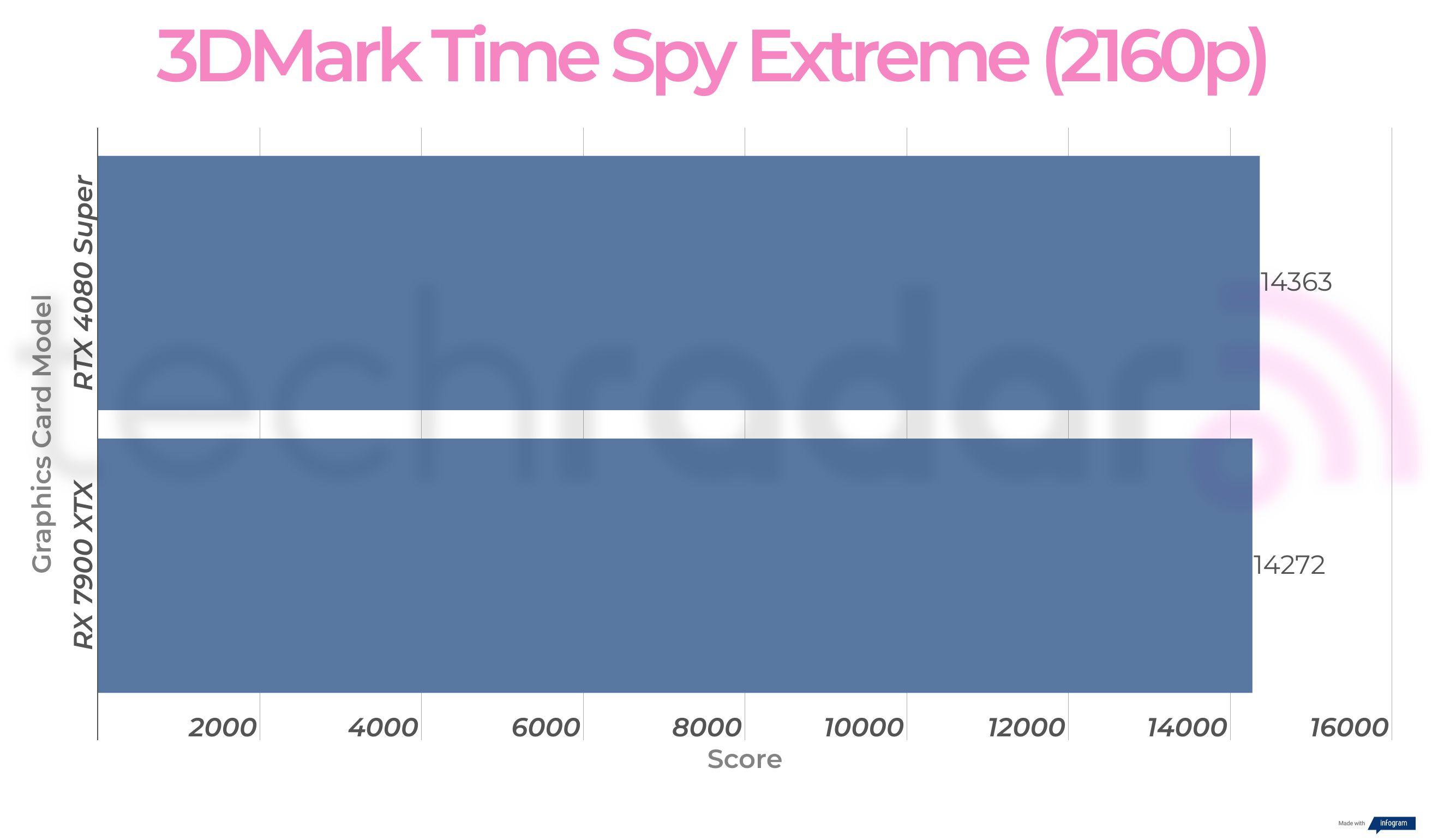
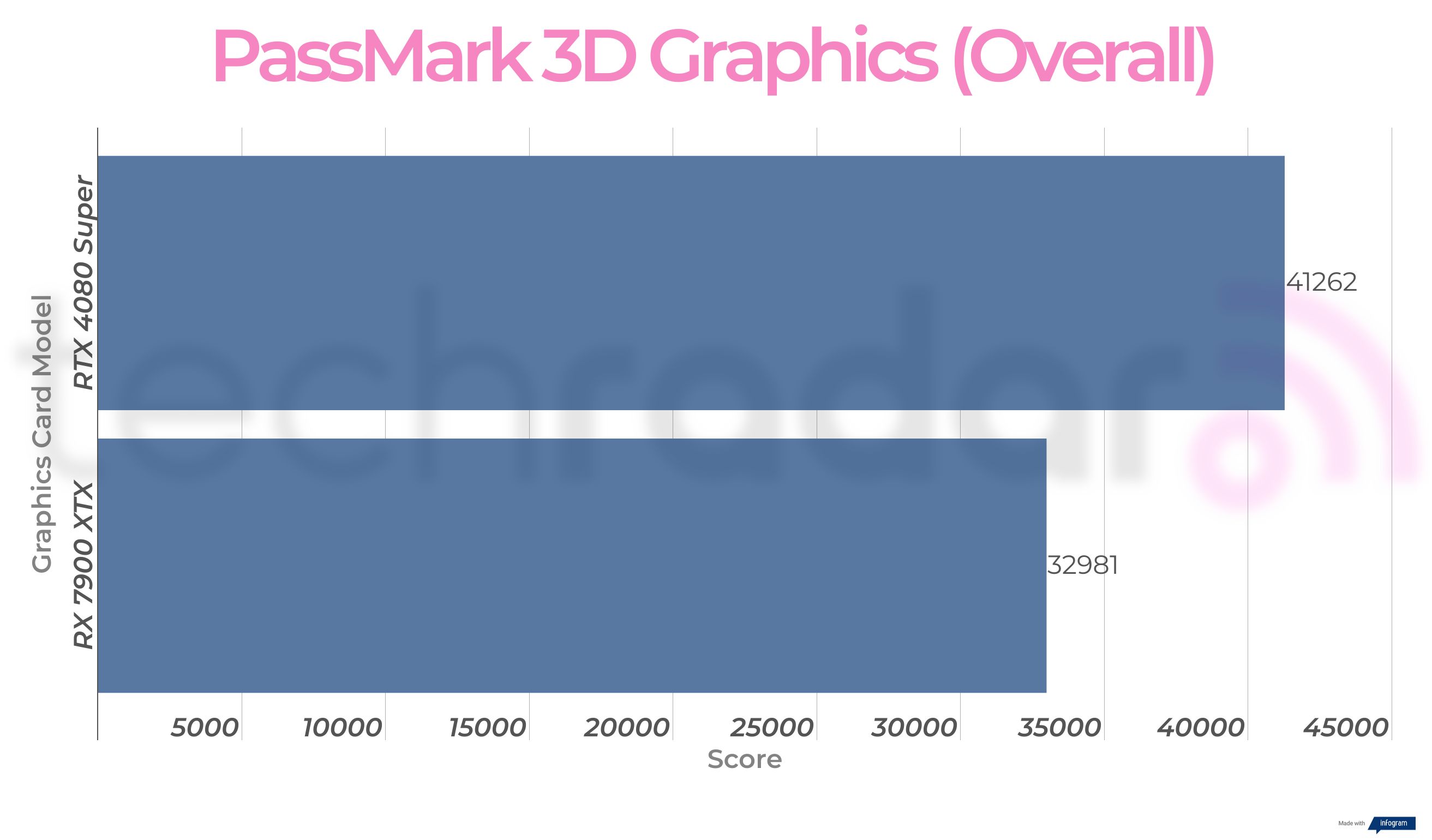
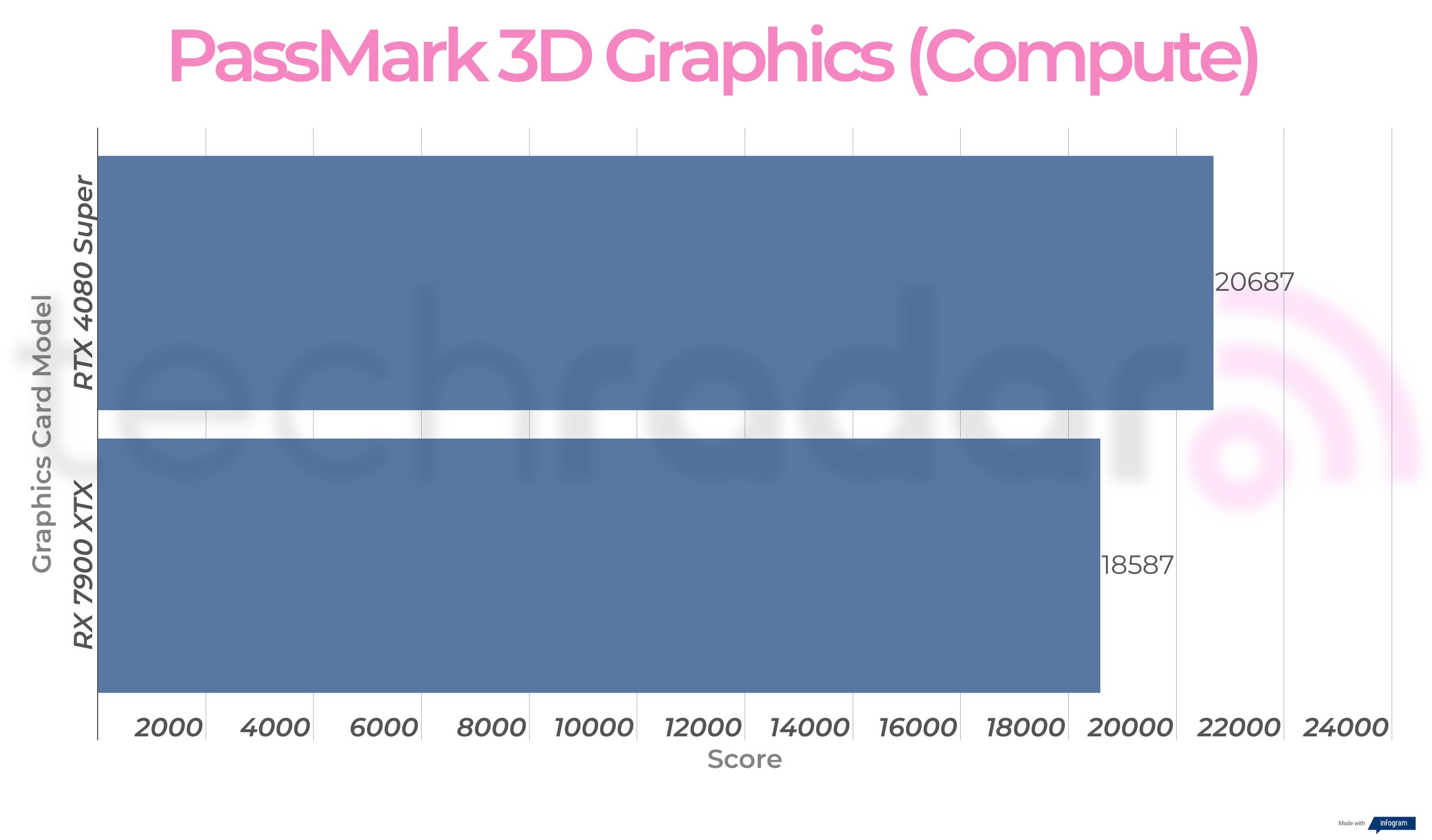
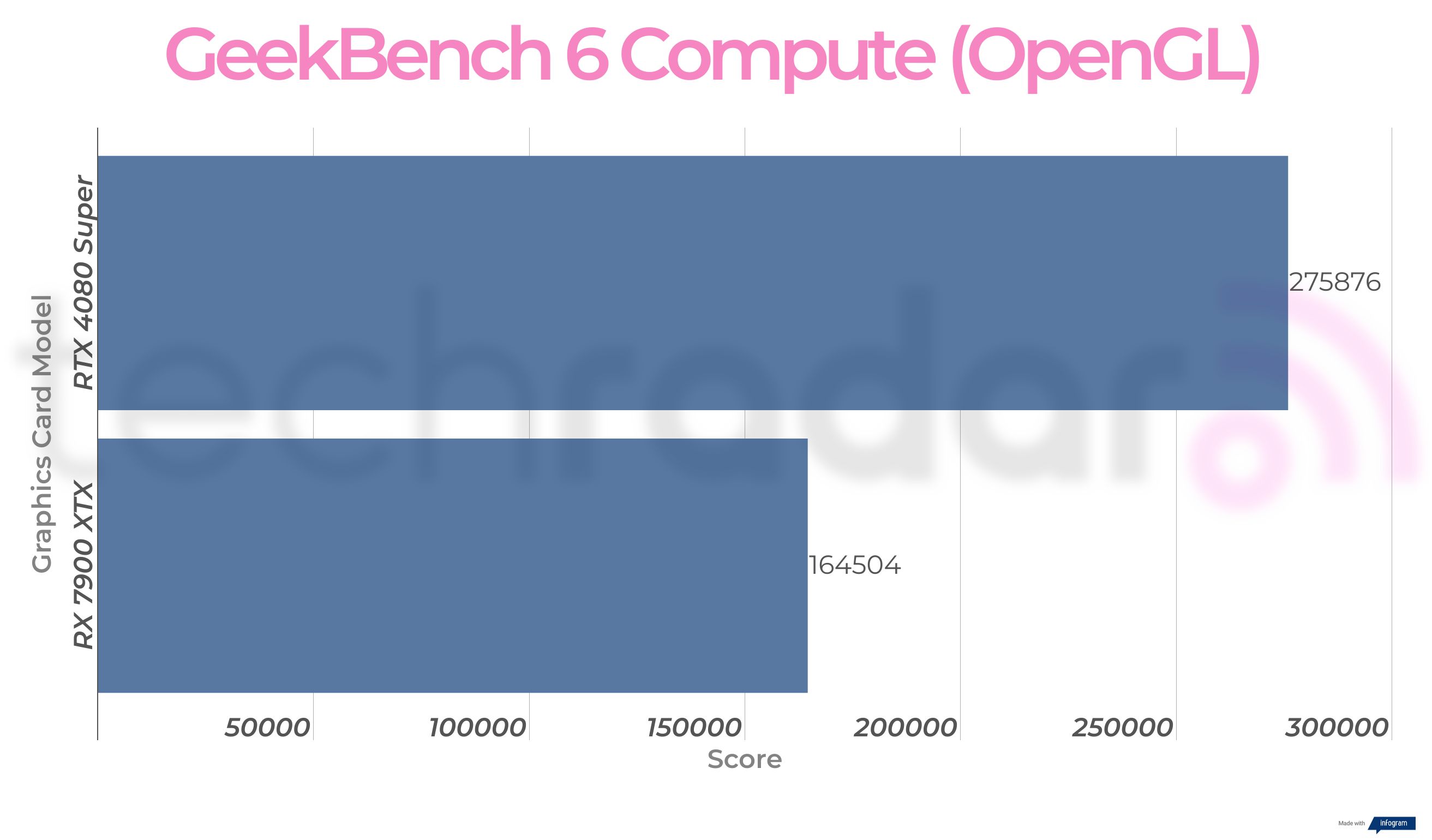
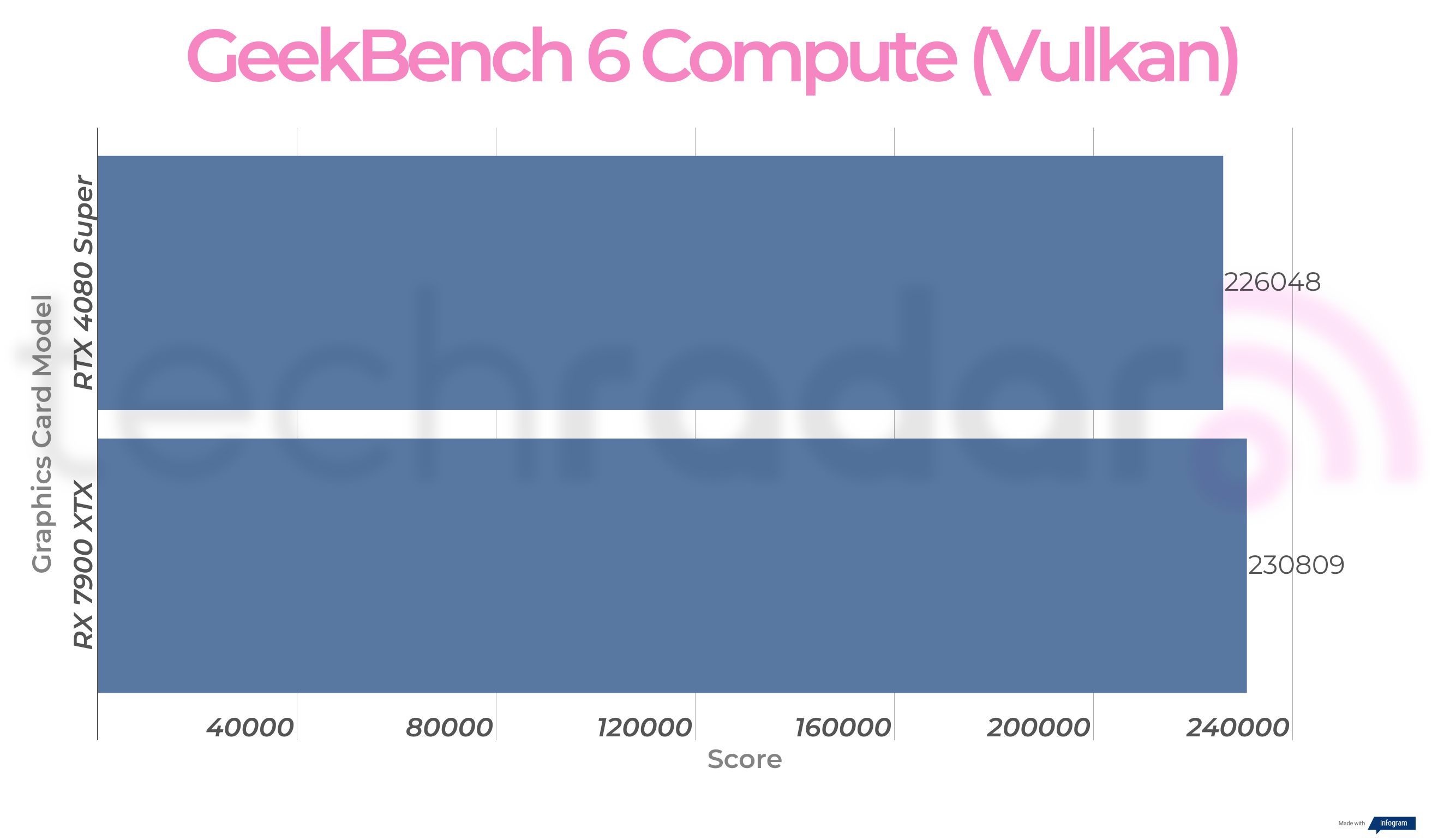
When it comes to creative performance, the RTX 4080 Super comes out way ahead, with the RX 7900 XTX not even being able to properly run the Blender Benchmark 4.0.0 workloads.
This might be something fixed in a later update, but it's emblematic of the RX 7900 XTX uneven creative performance, though it does pull ahead in Adobe Photoshop's rasterization workloads.
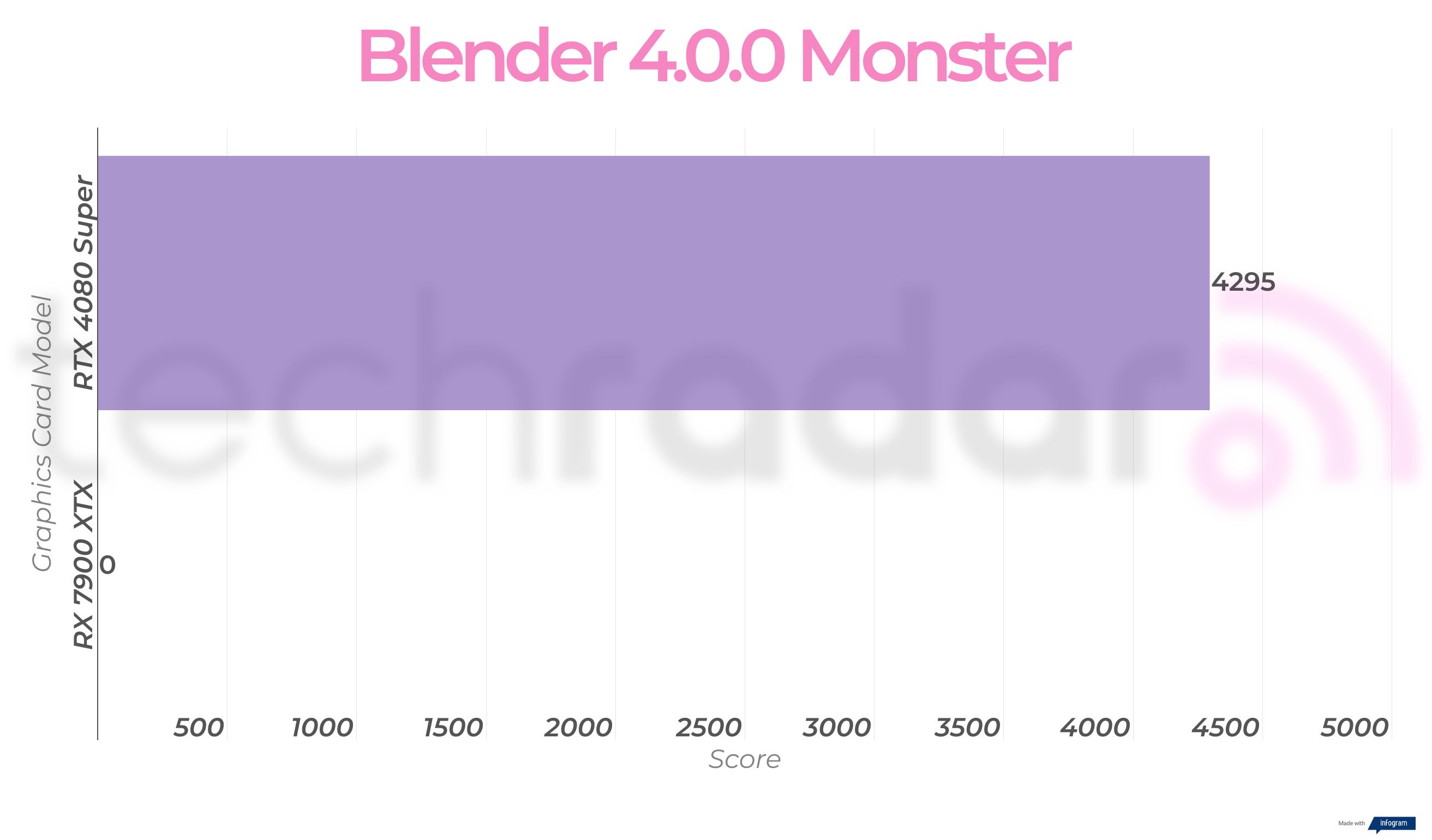

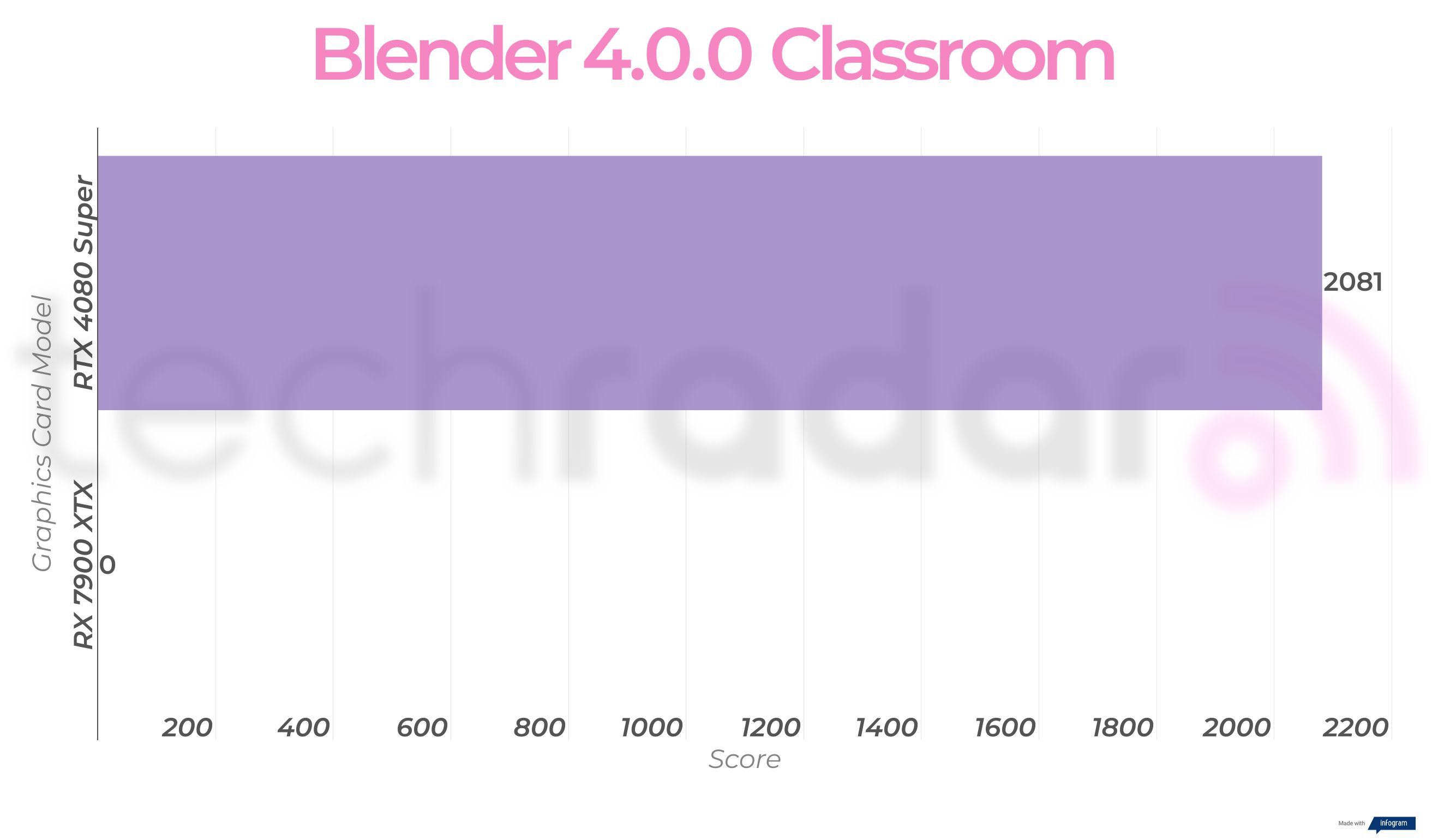
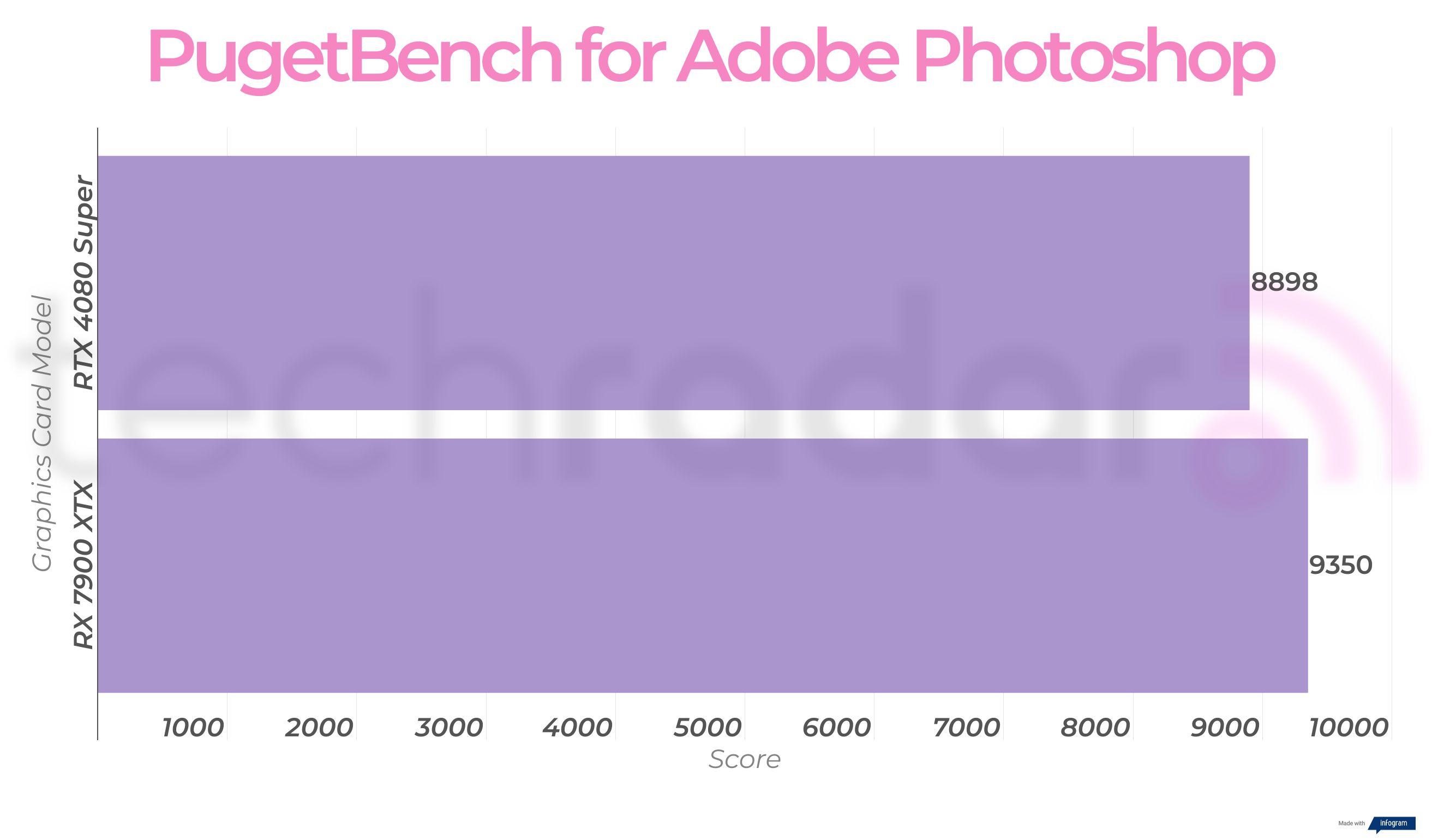
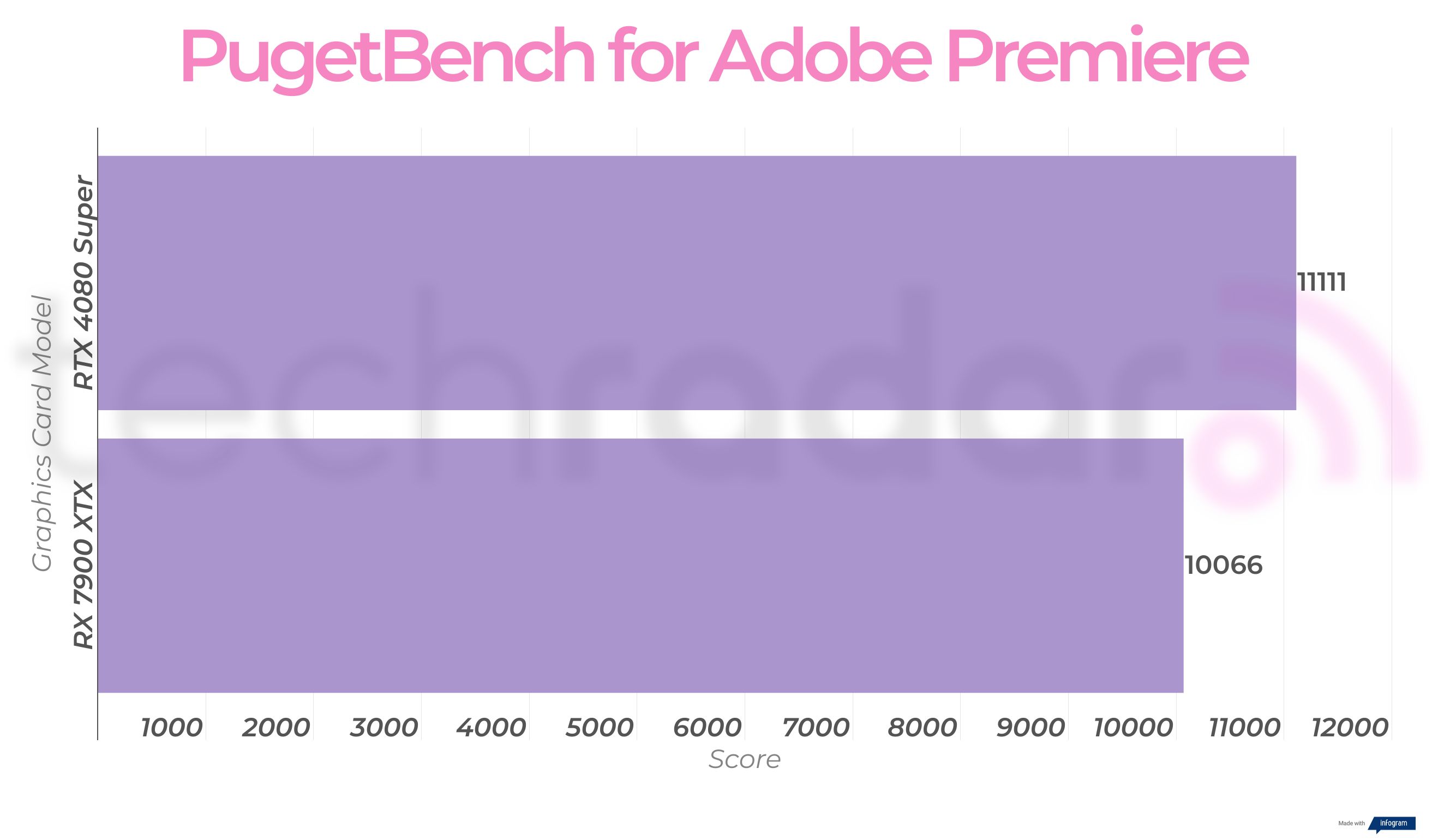
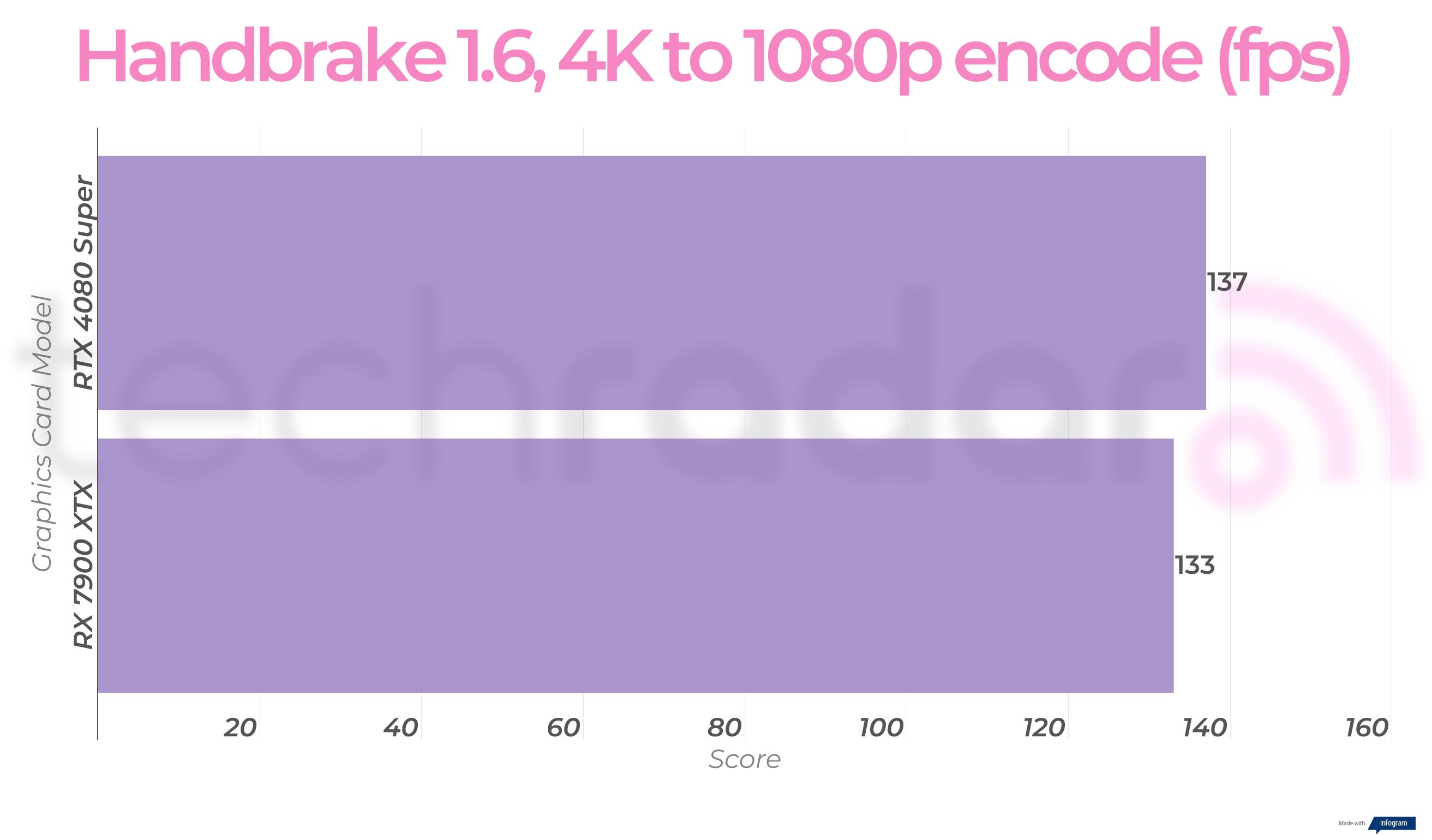
The 4K gaming performance is the real test of the two cards’ metal. Starting off with the RTX 4080 Super’s impressive average framerates in demanding software.
The card achieves a 57fps average in Cyberpunk 2077 without ray tracing and 28fps with RT Psycho active with upscaling. Enabling DLSS 3 Frame Generation sees a mighty boost to 85fps and 63fps with the technology activated, which is impressive given how demanding this title continues to be.
The GPU didn’t break a sweat with Returnal either, with the game’s native performance averaging 91fps and Epic RT at 68fps. DLSS bolstered these figures to 138fps and 118fps respectively.
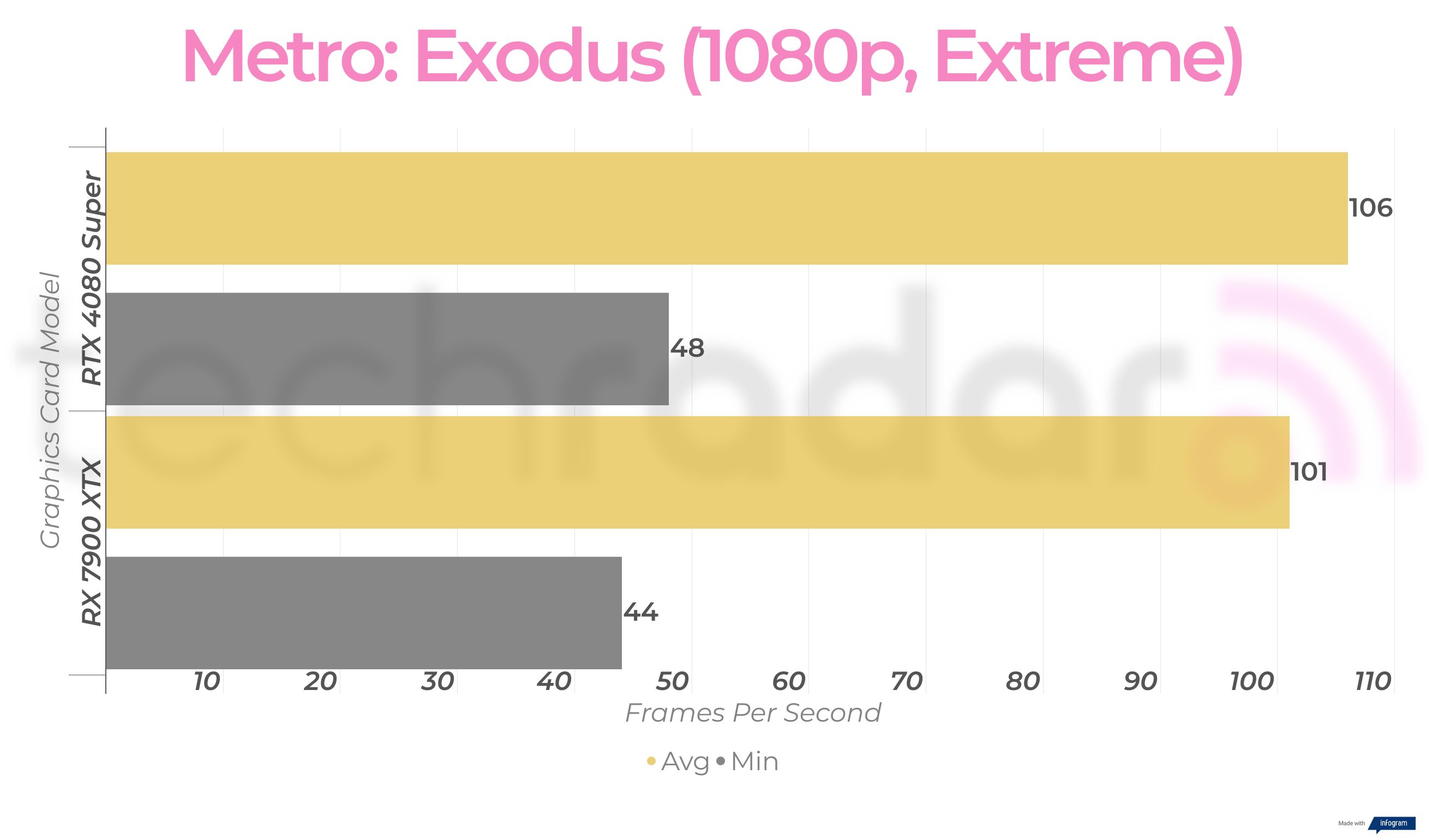
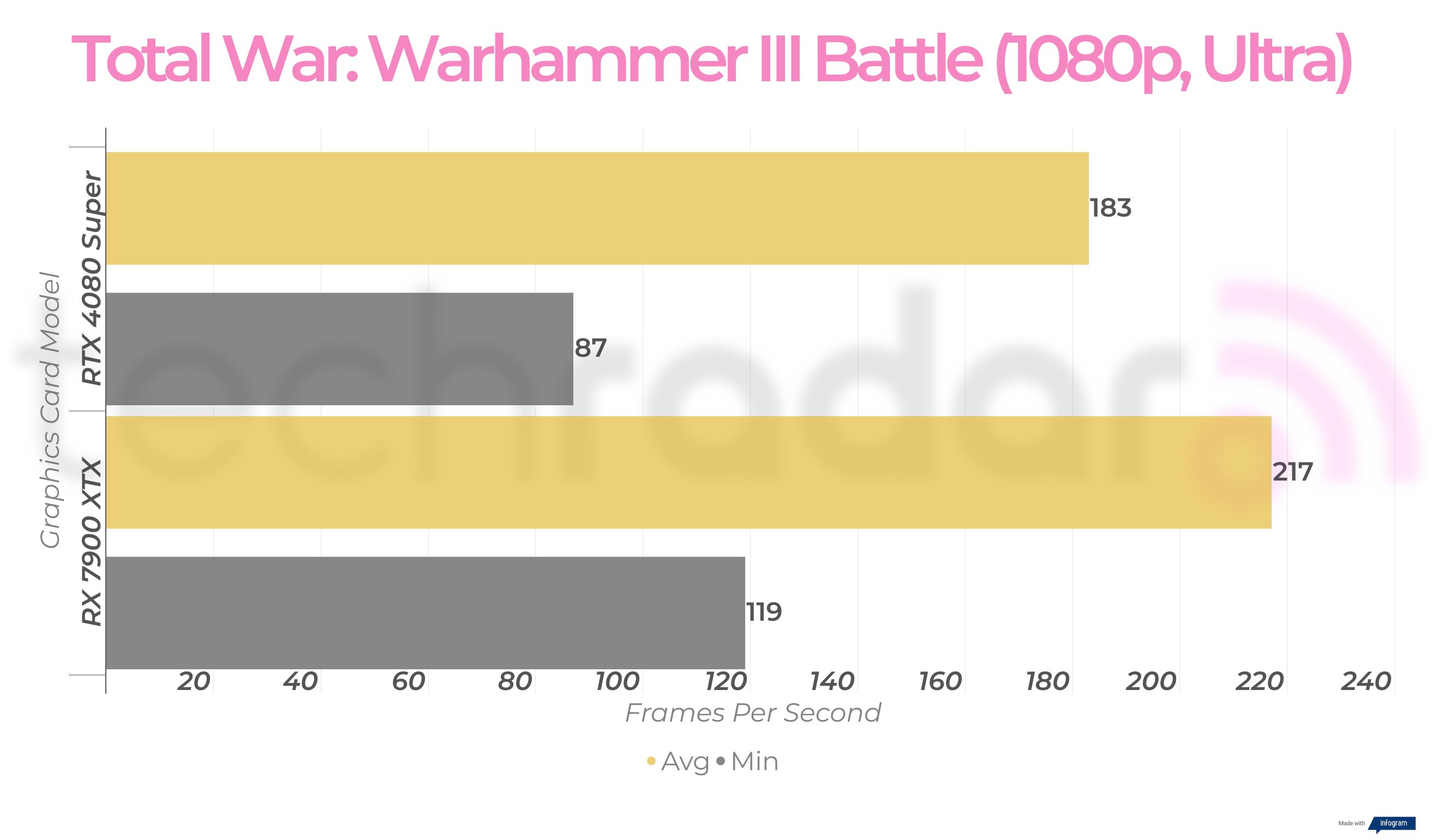
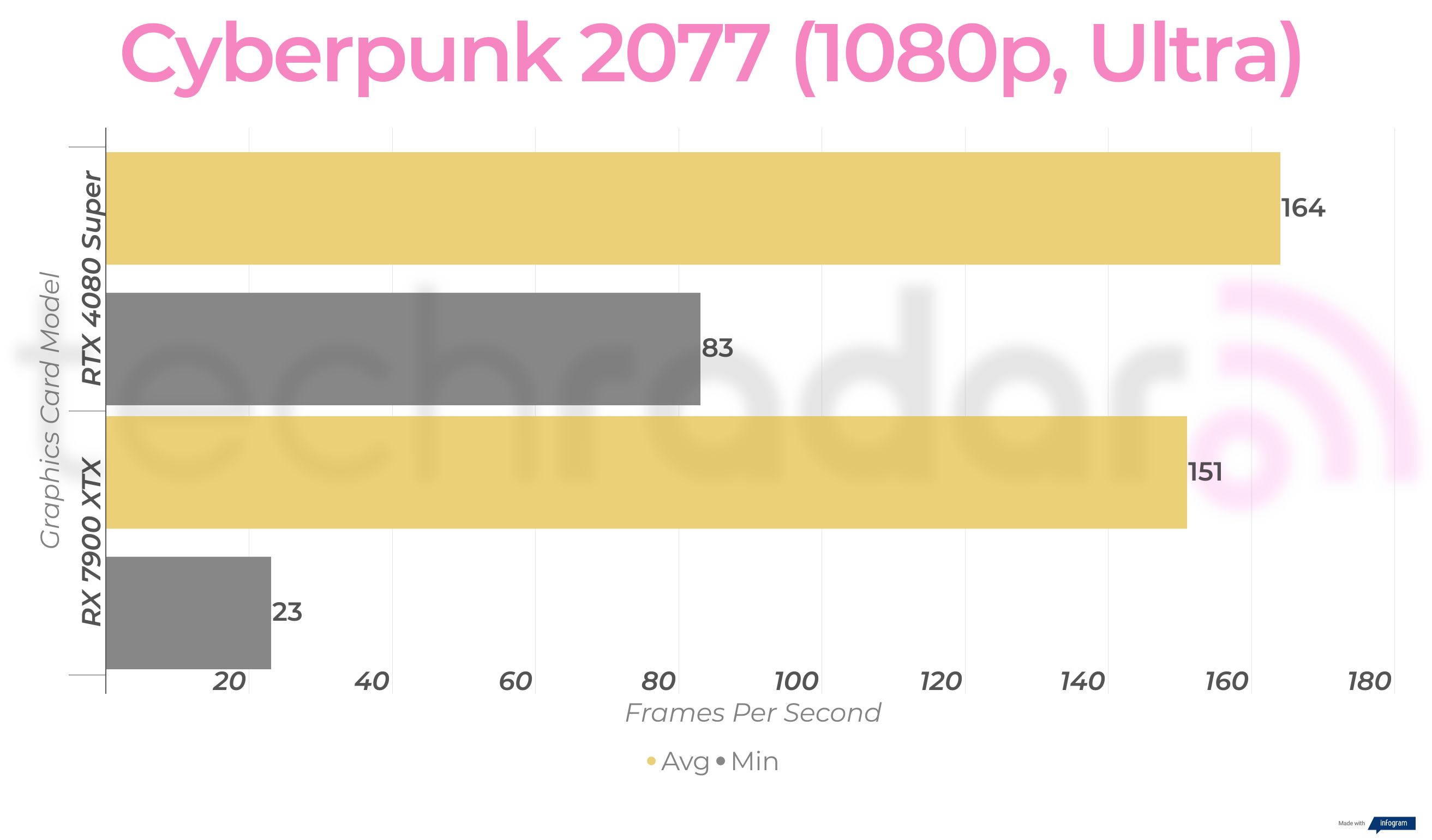
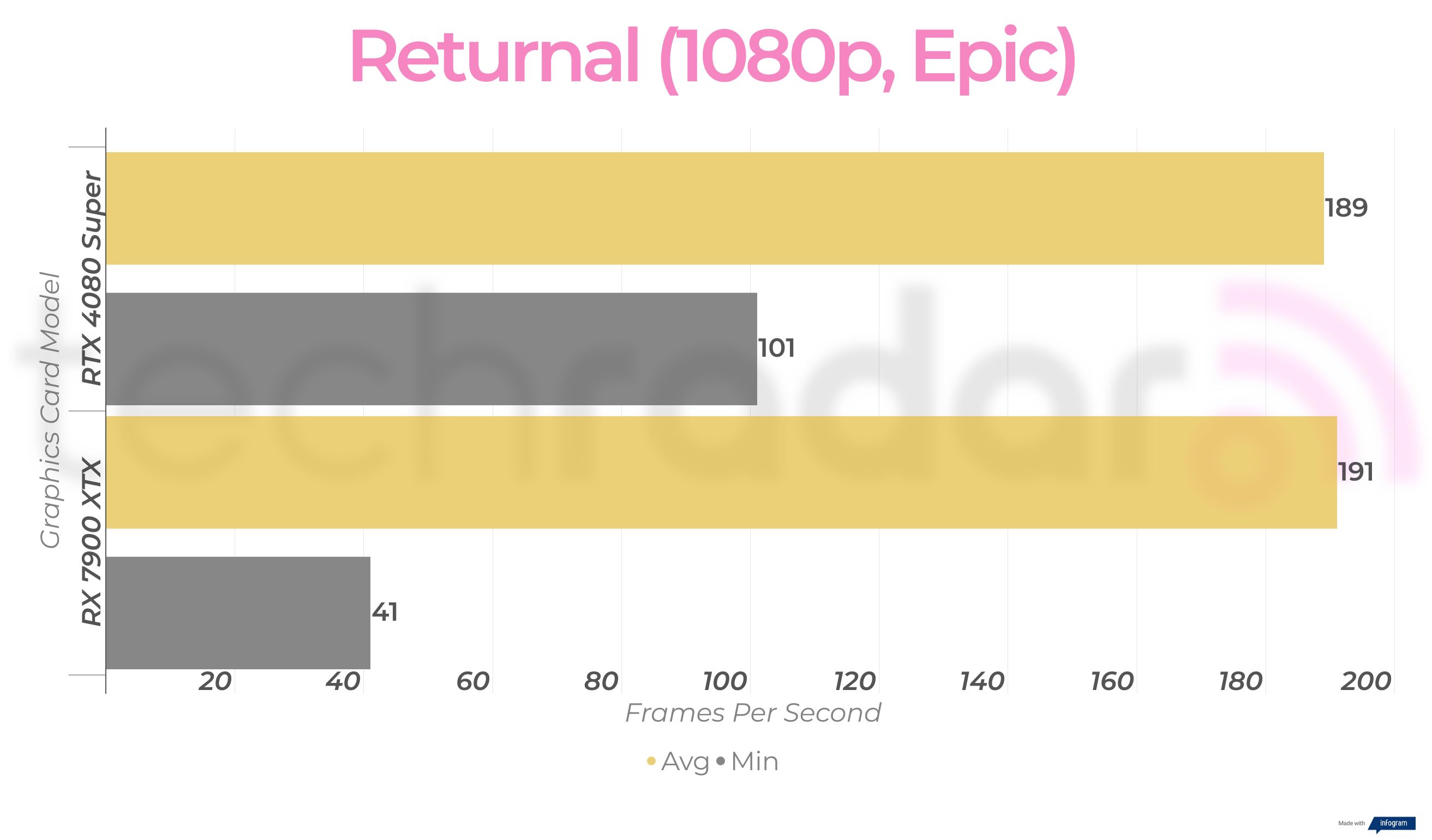
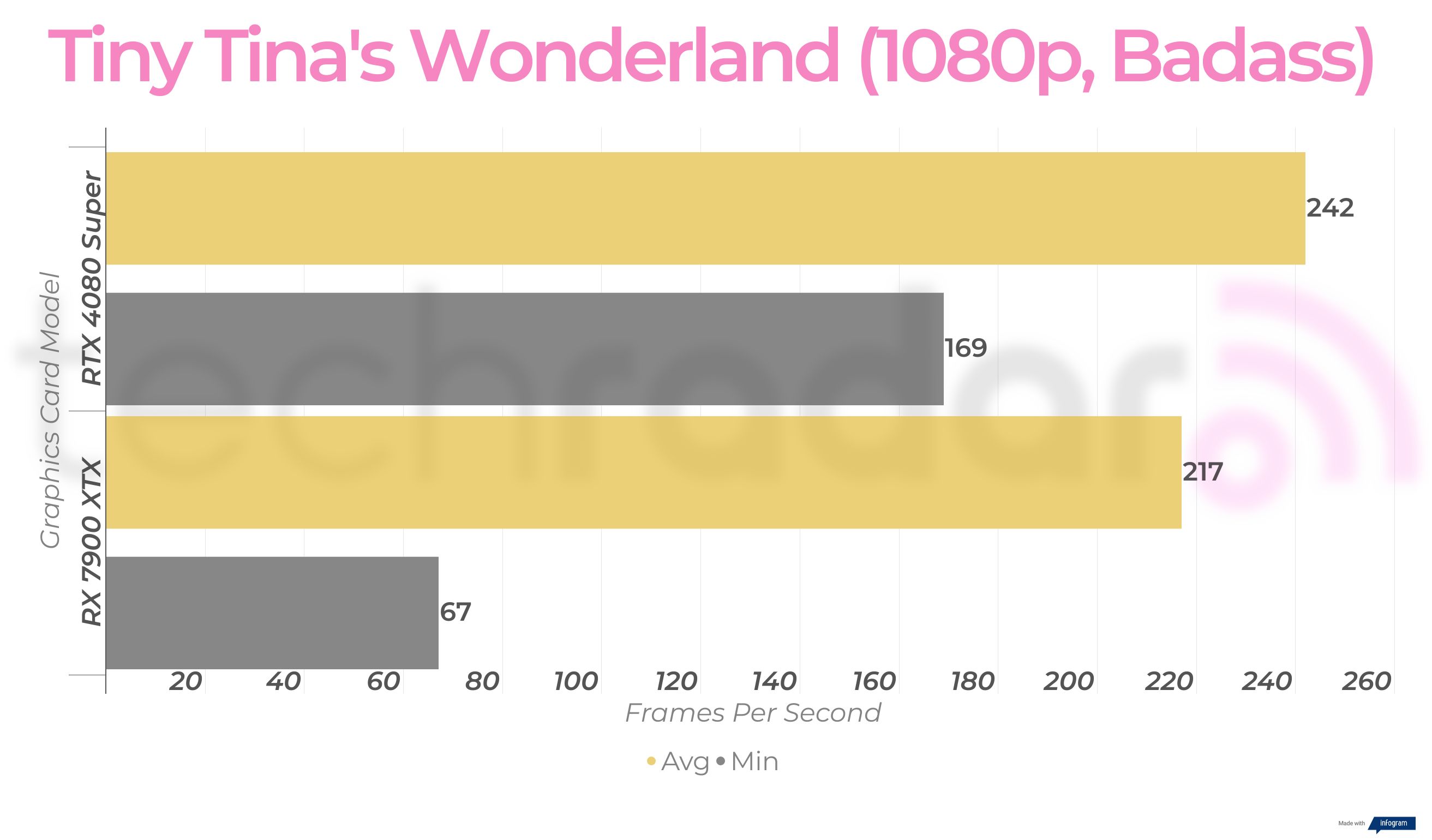
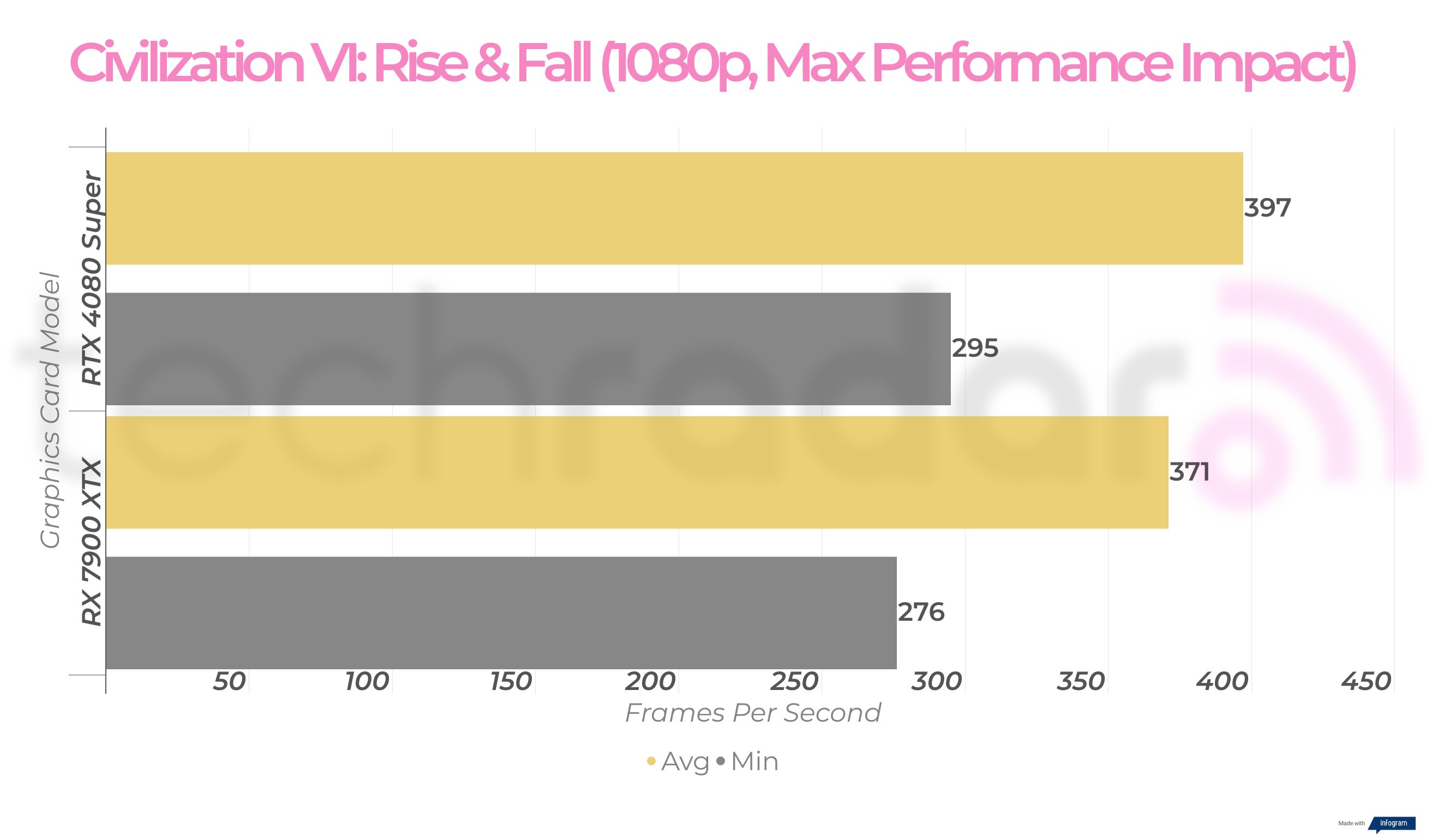
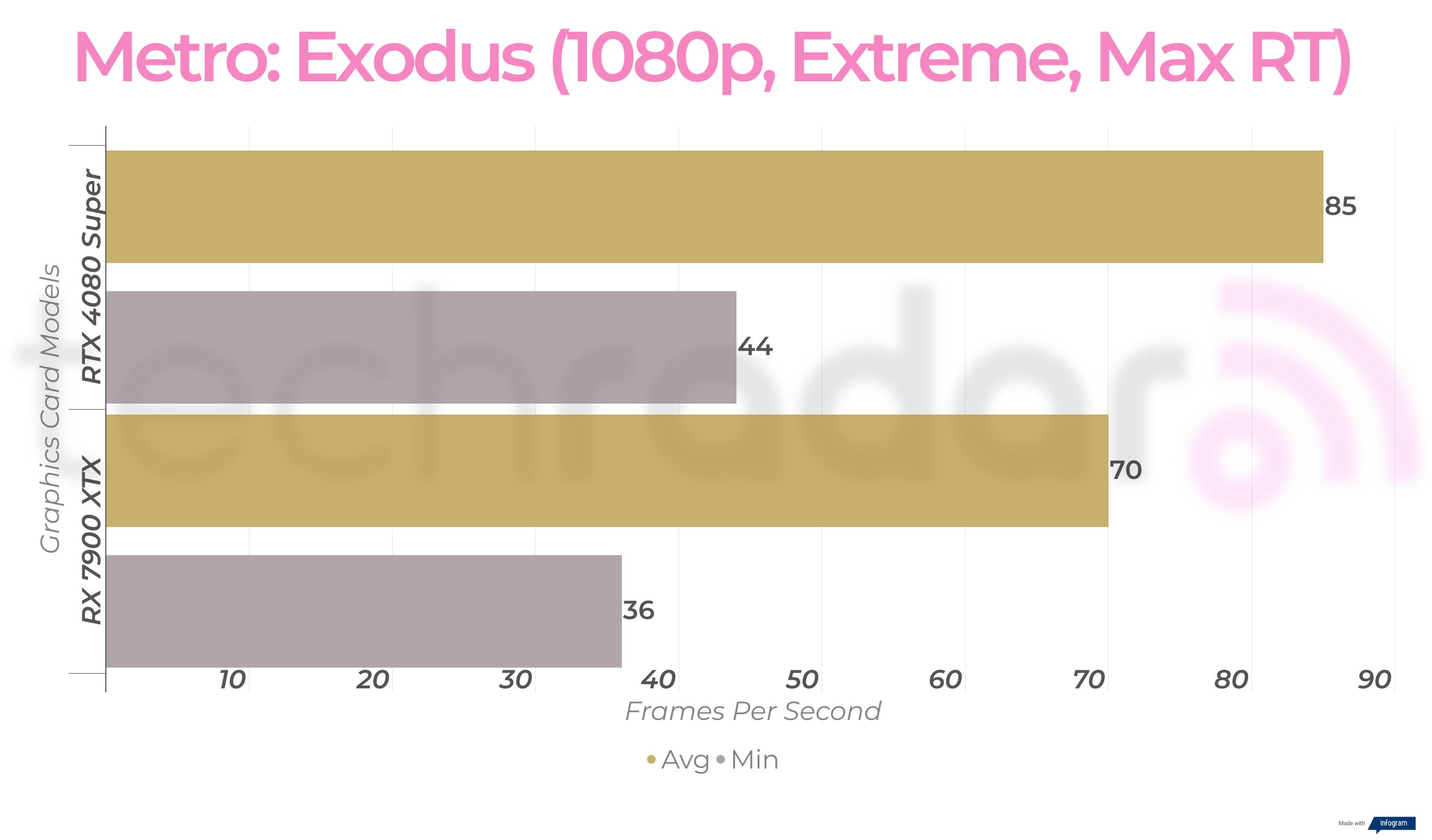
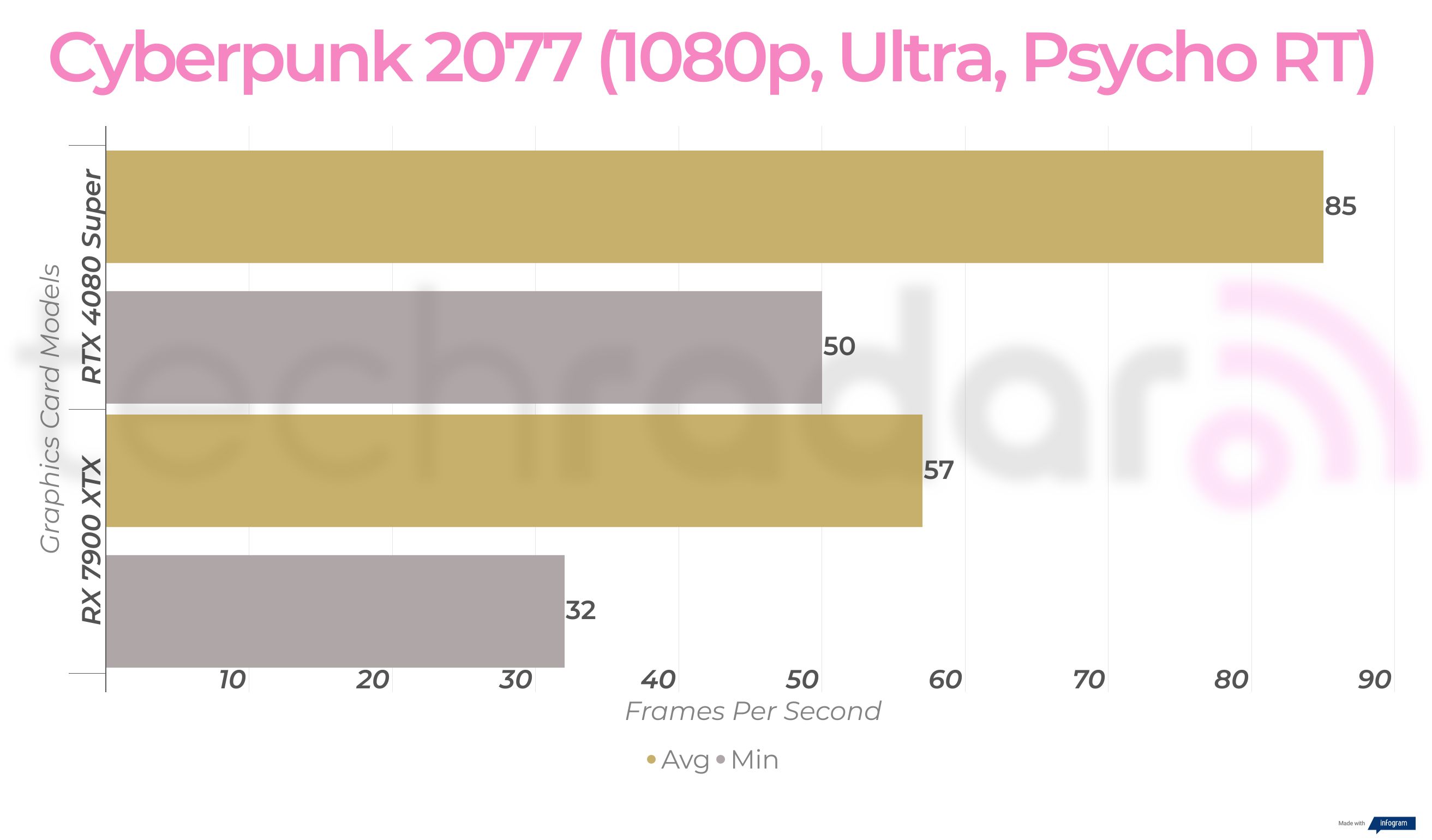
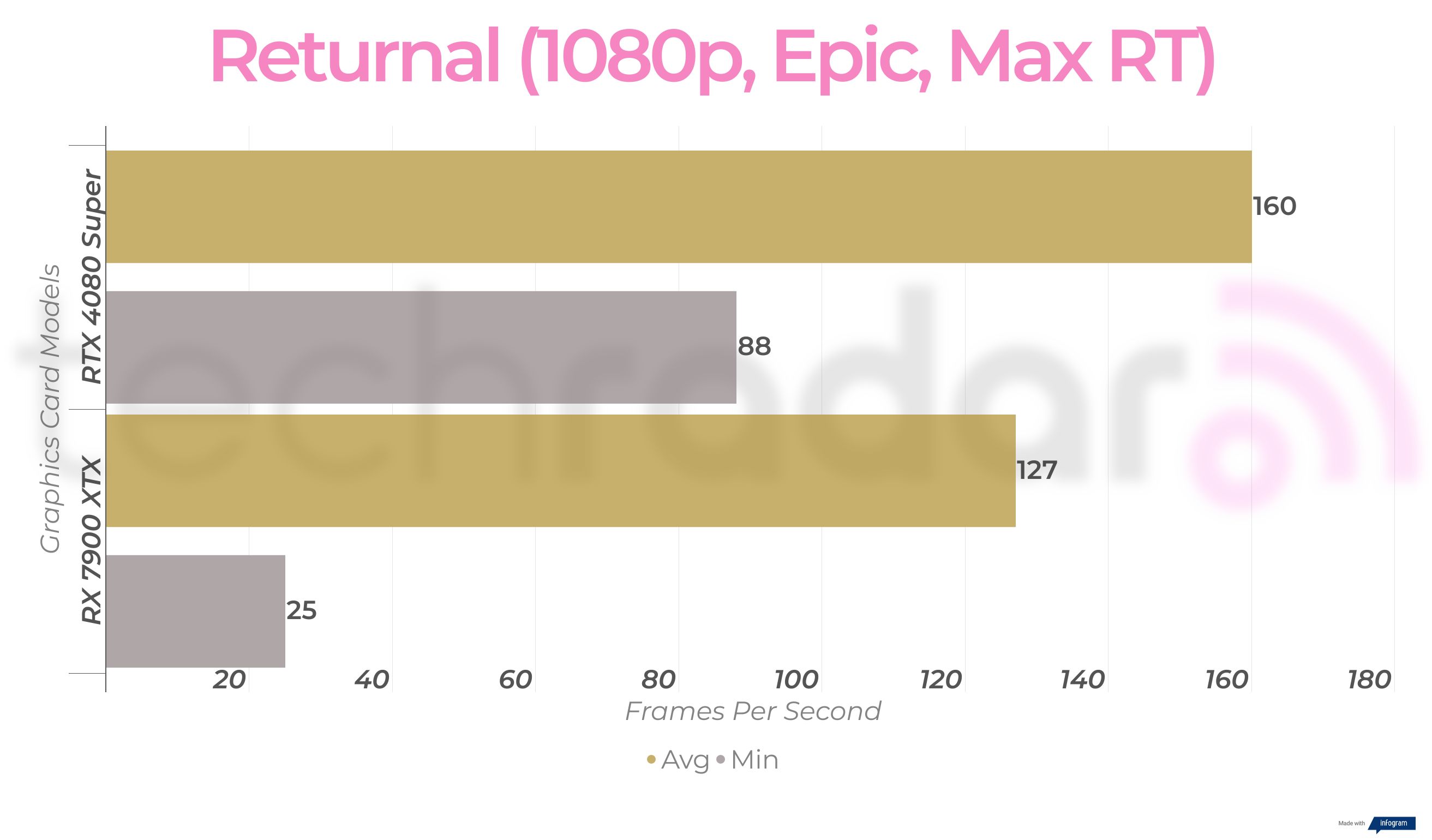
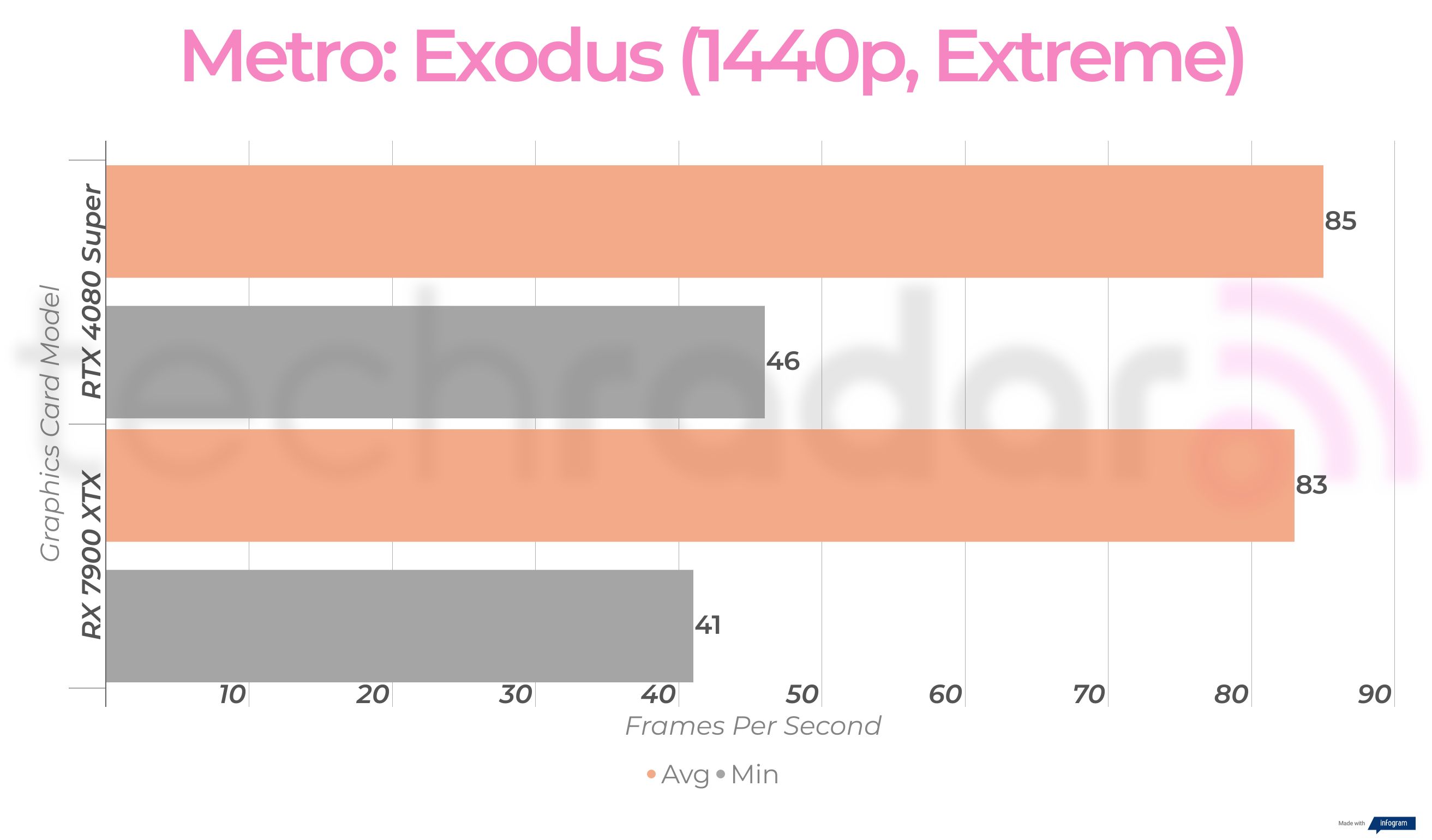
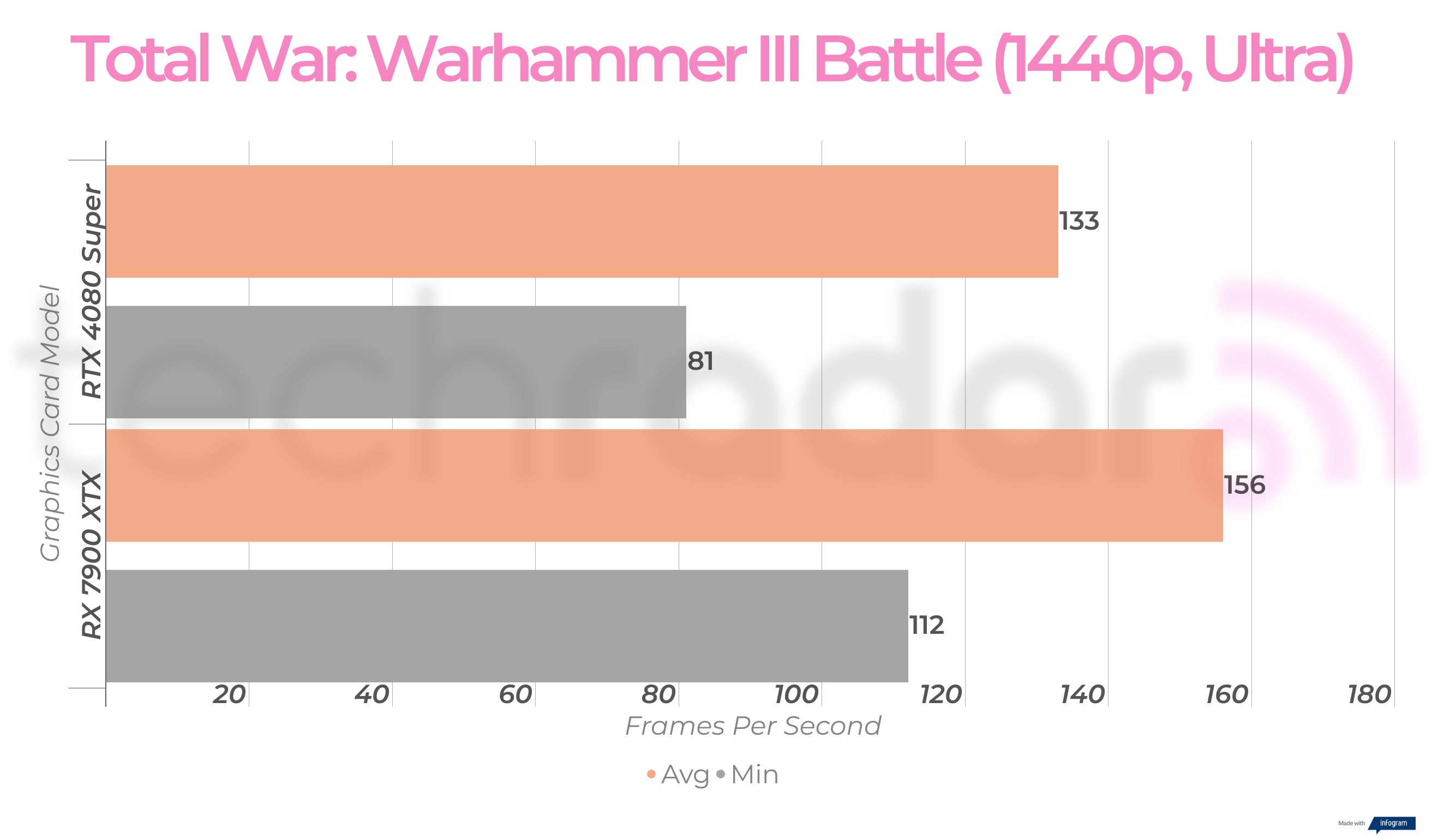
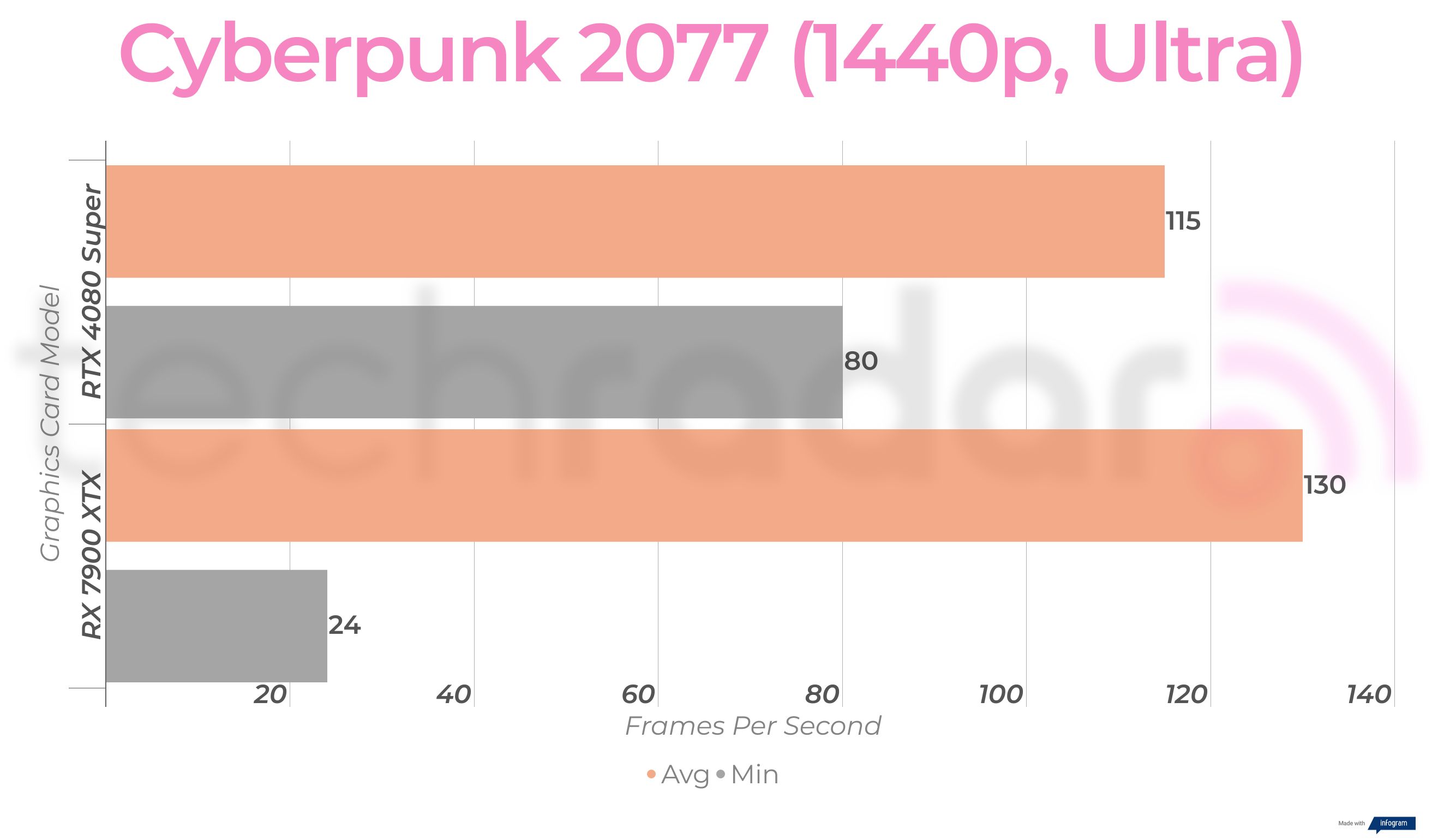
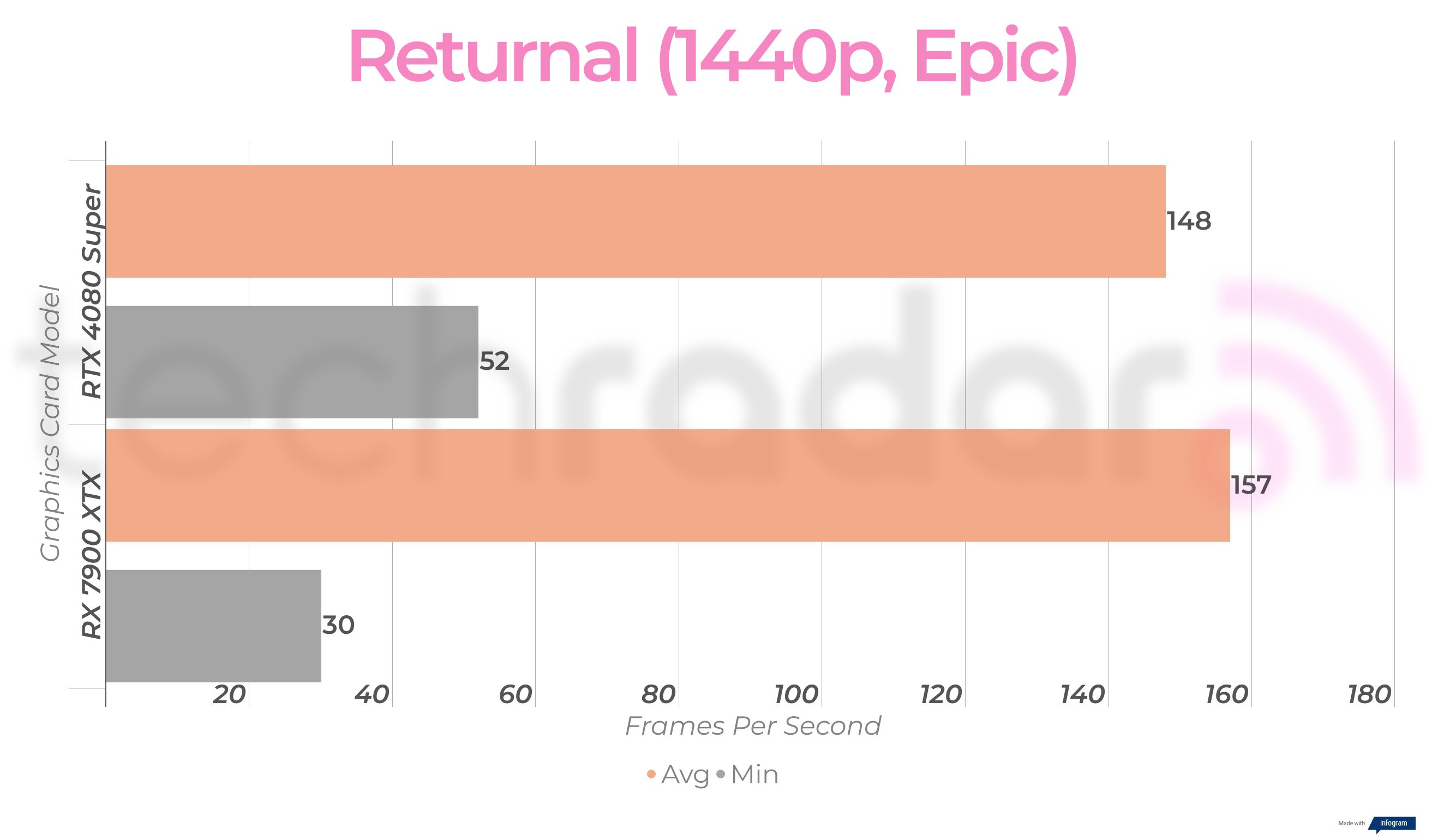
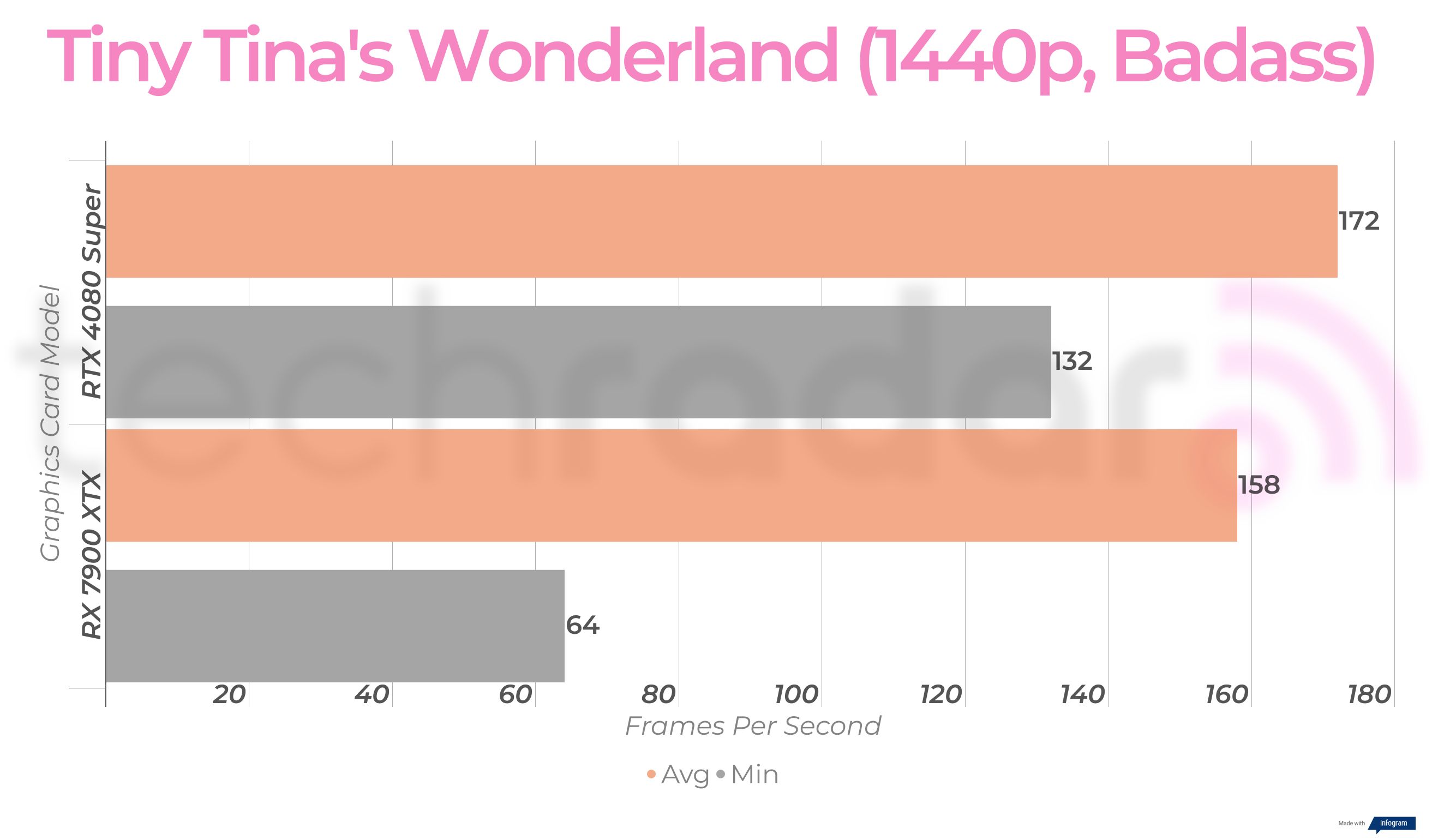
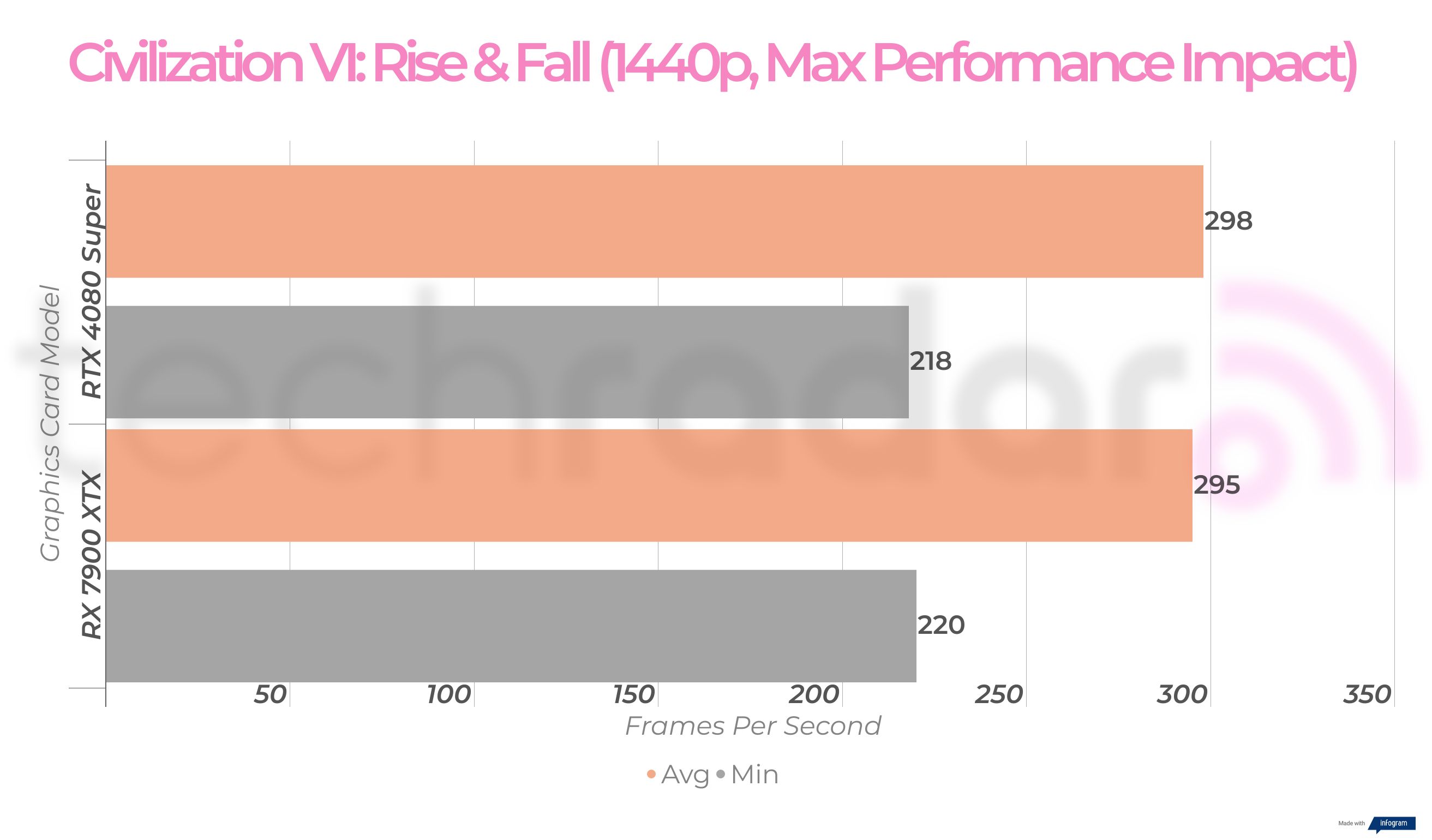
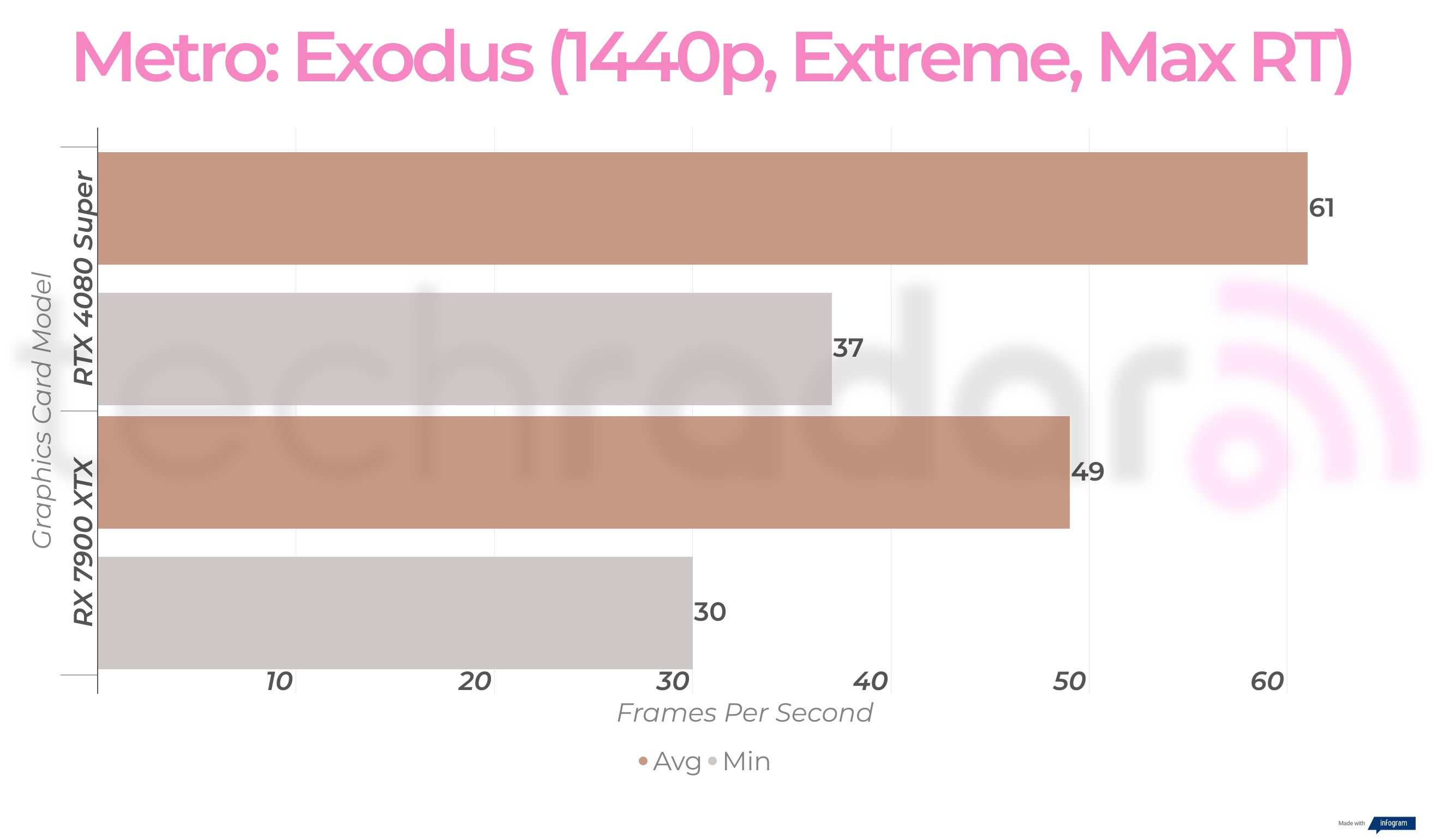
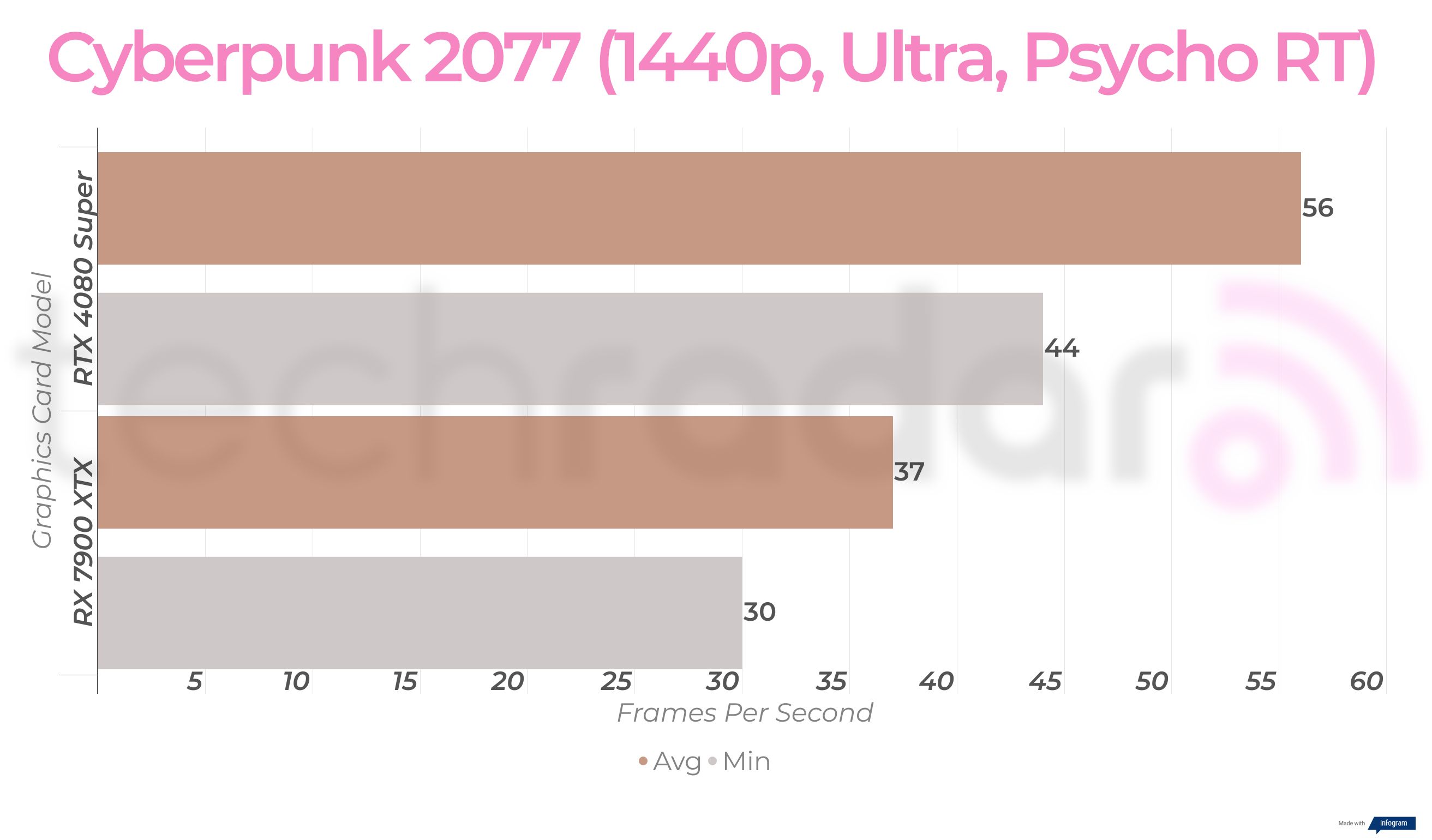
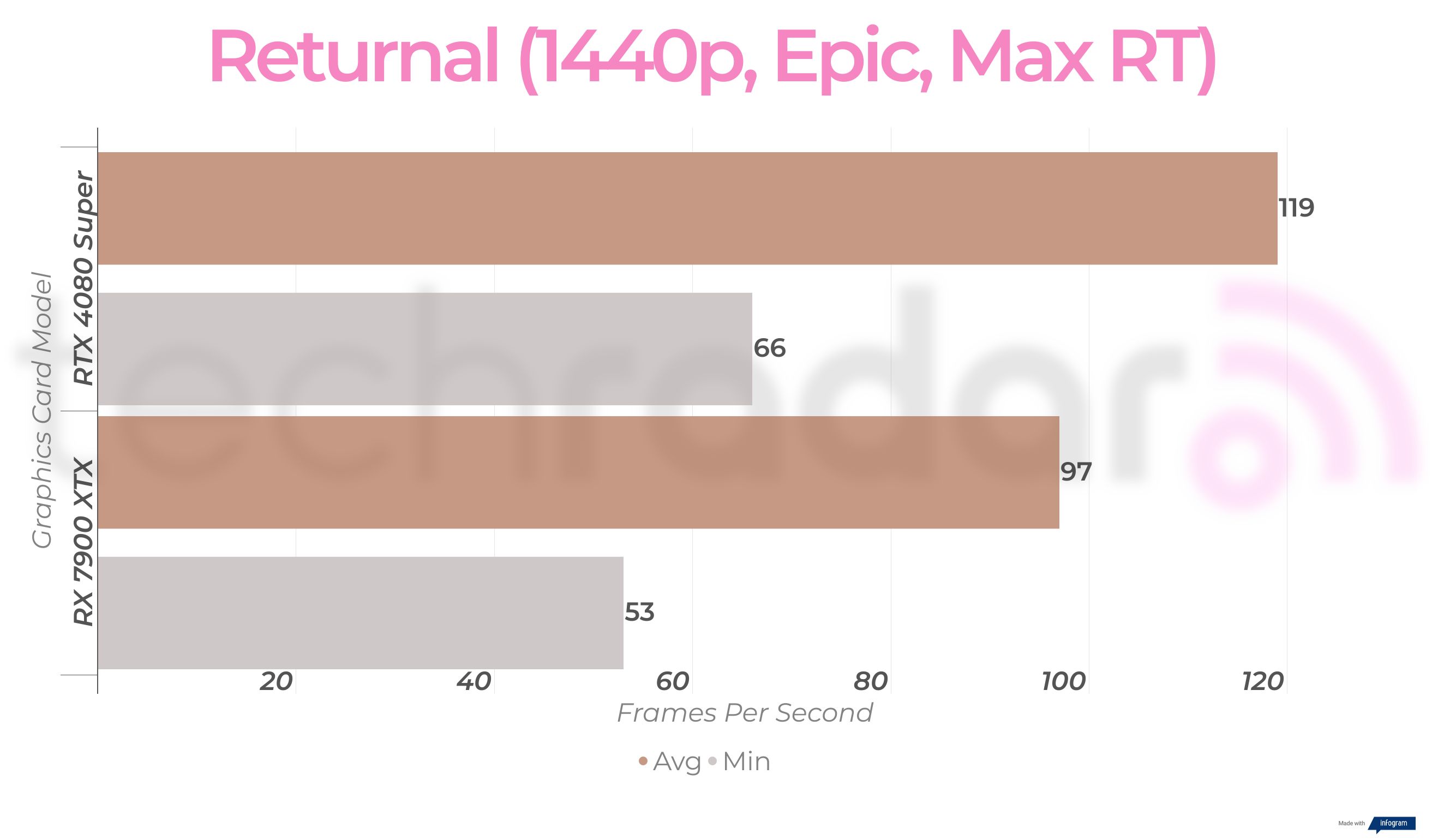
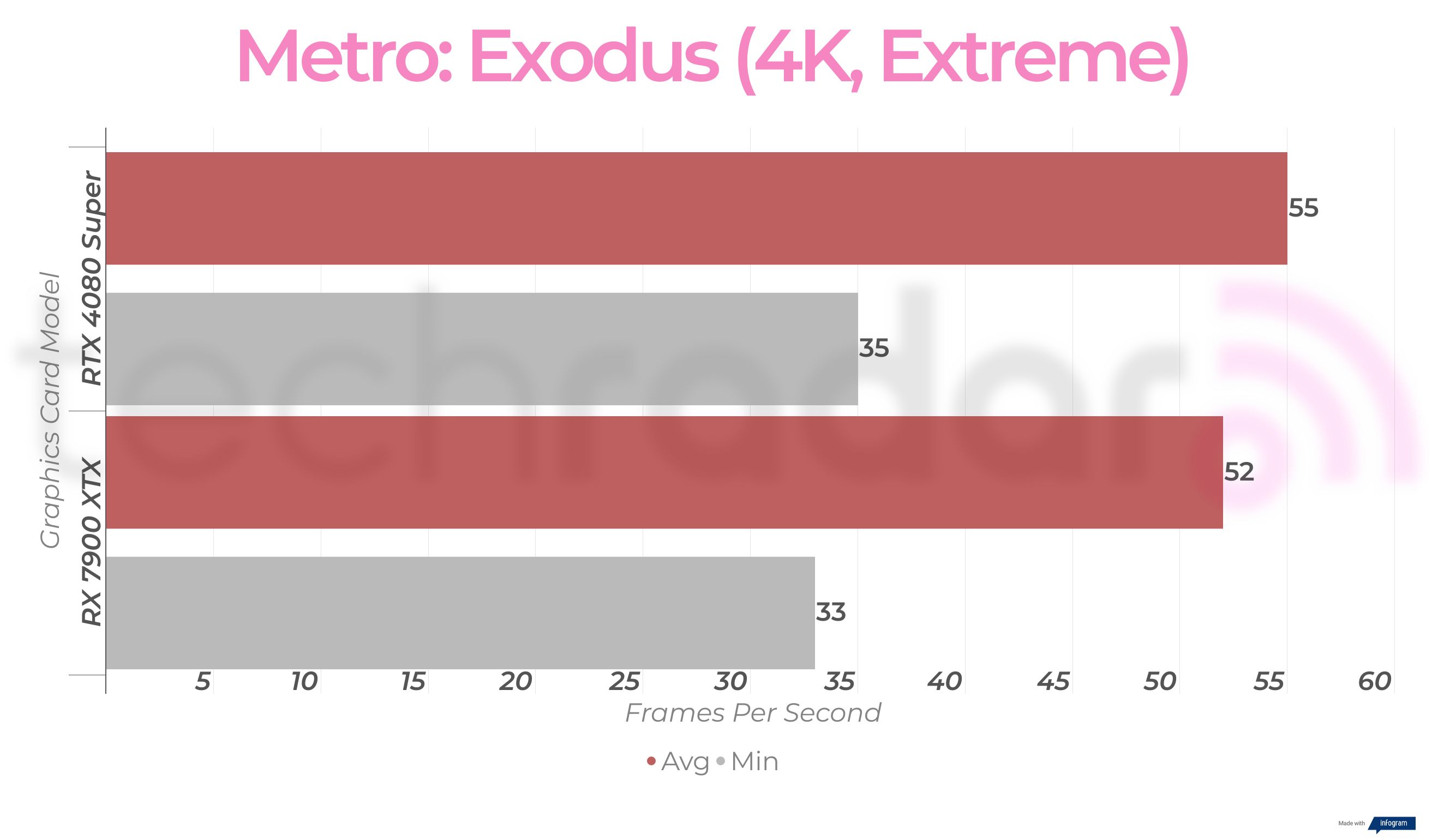
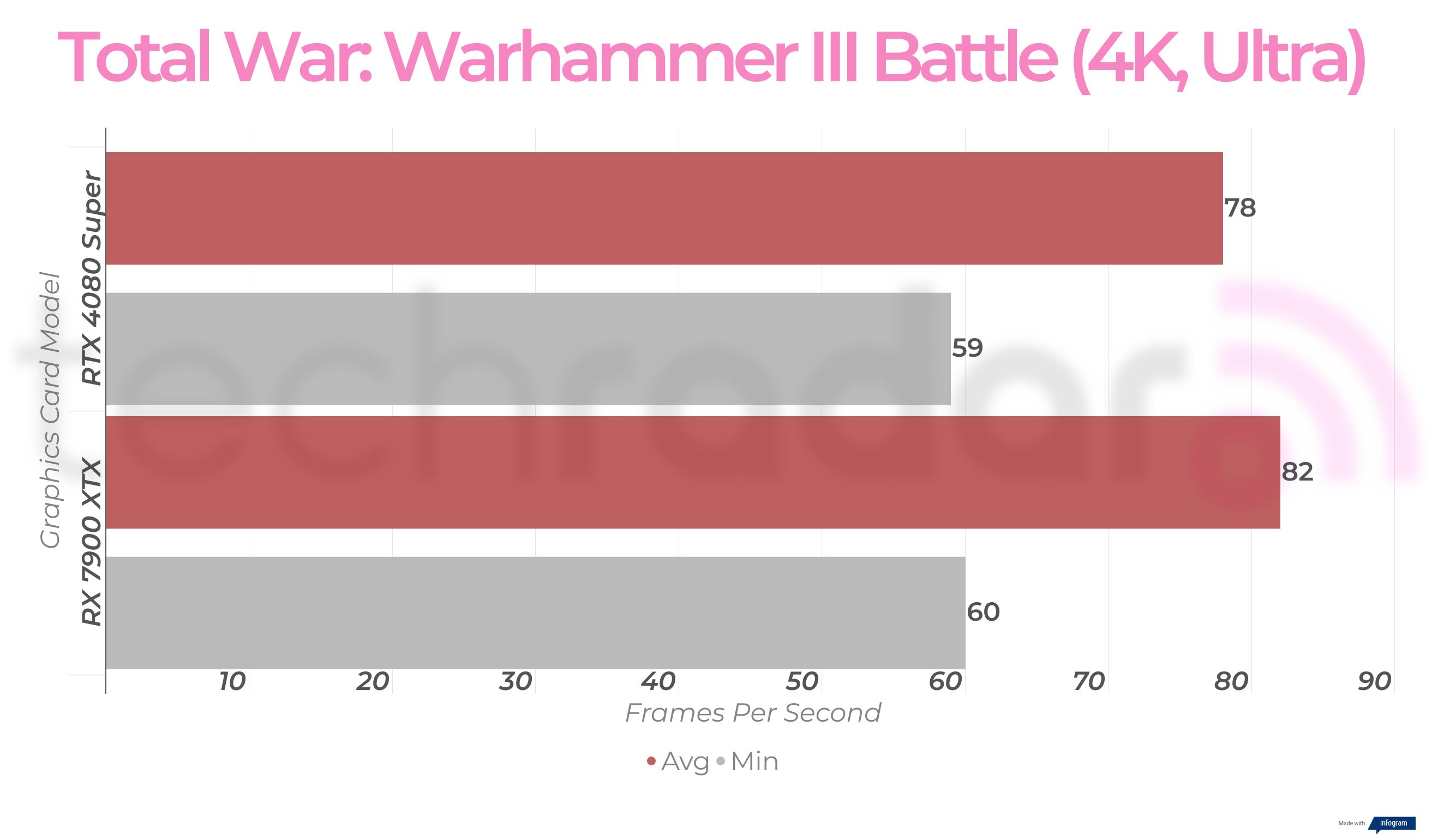
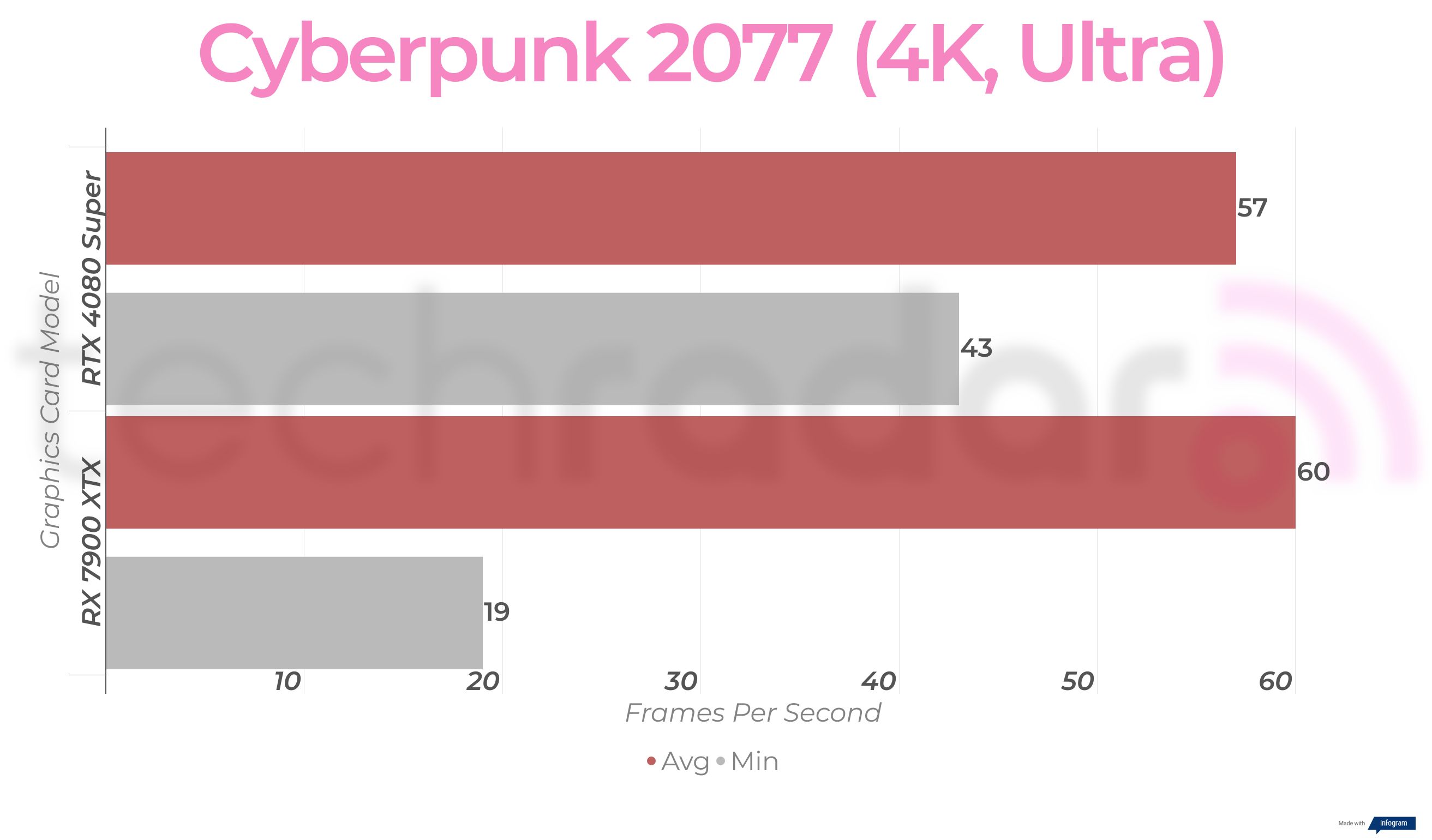
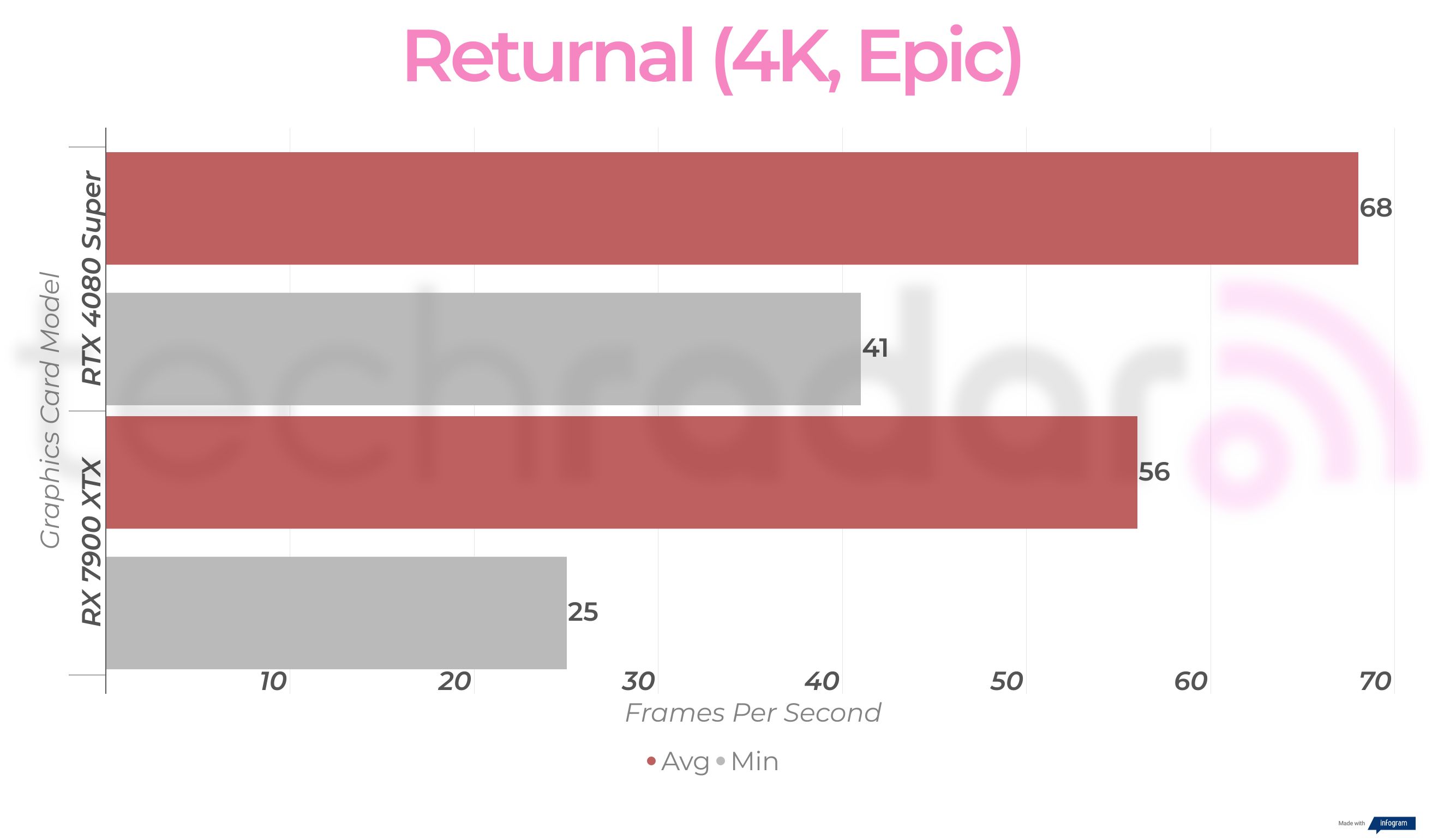
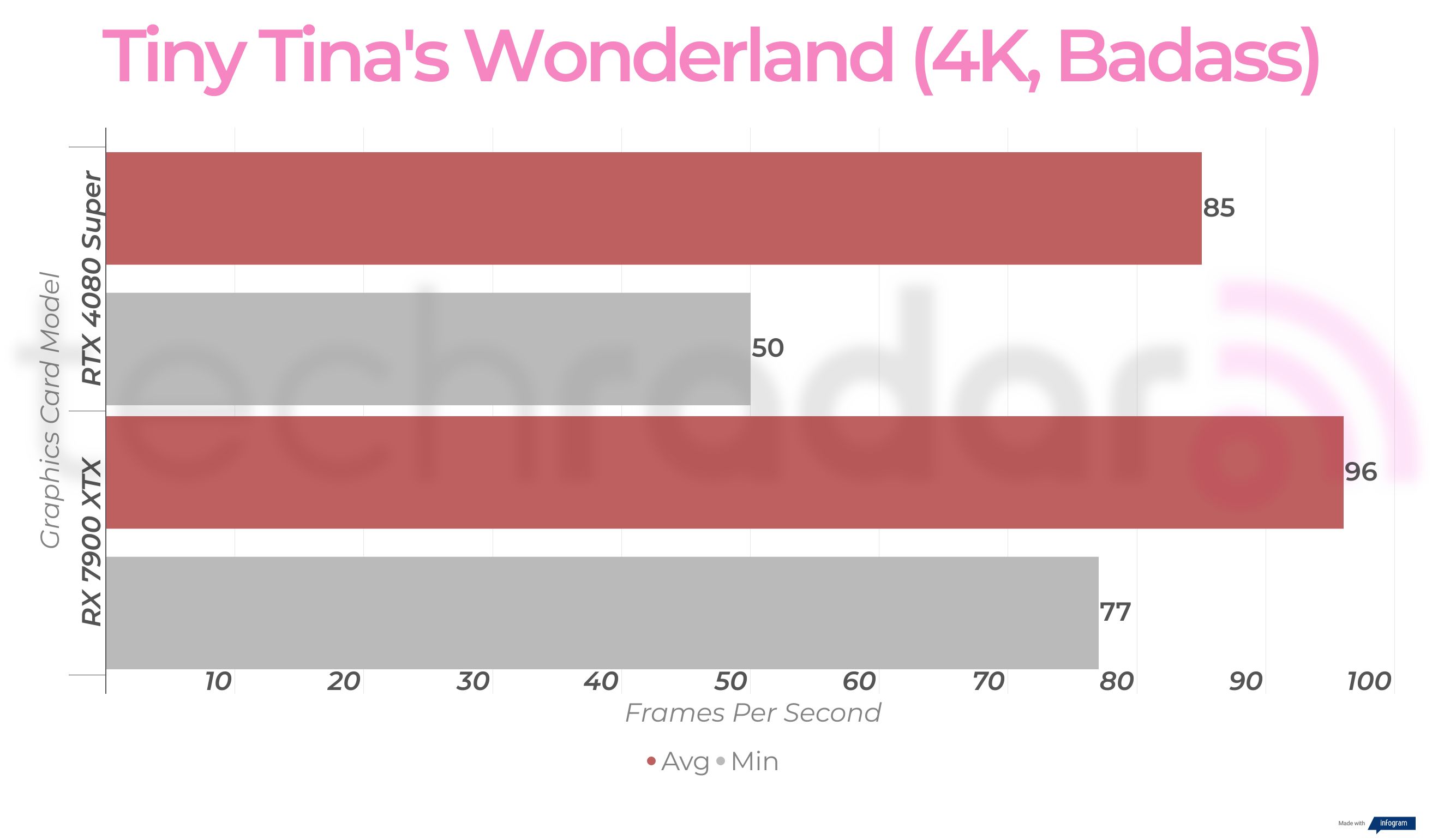
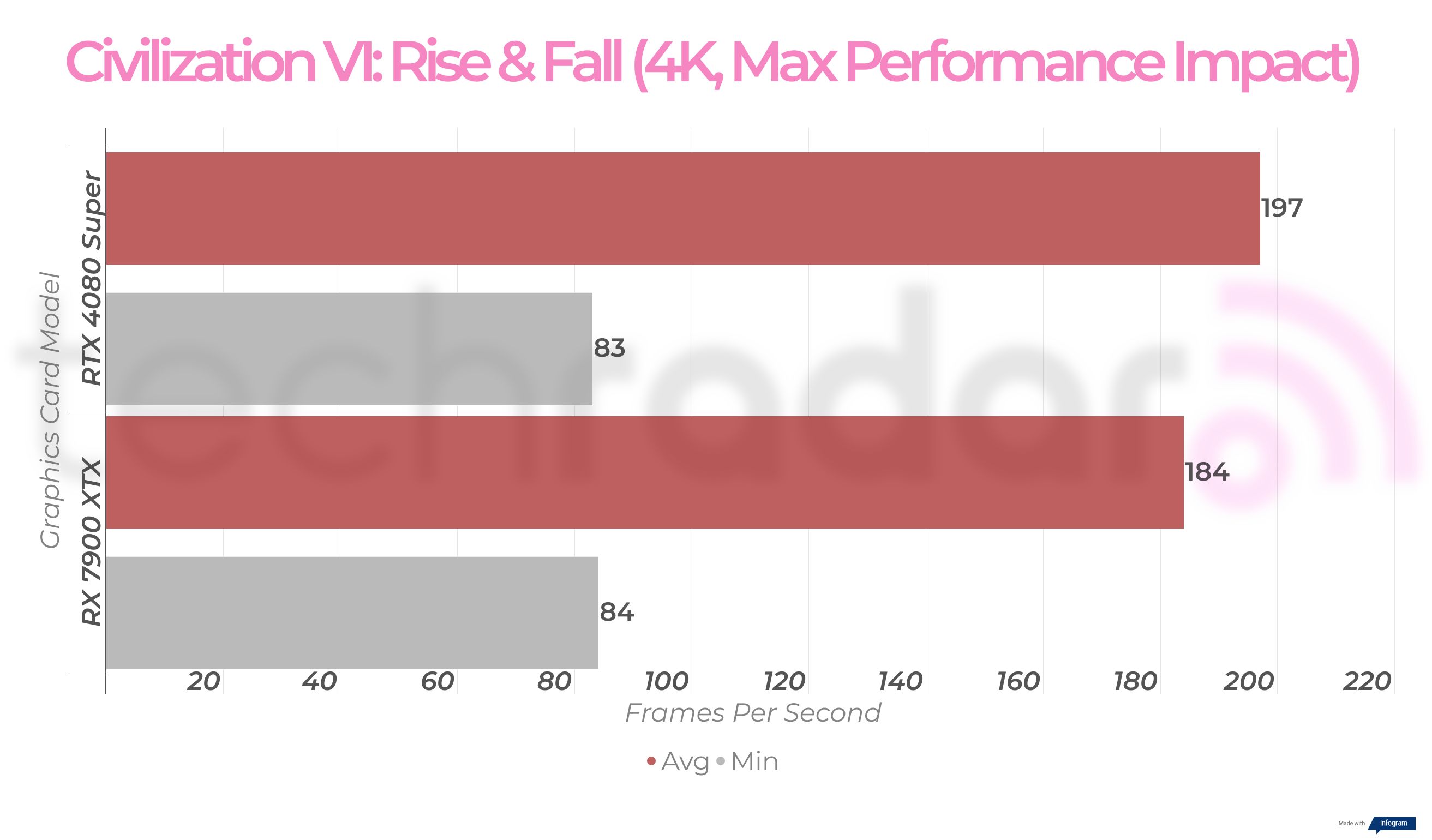
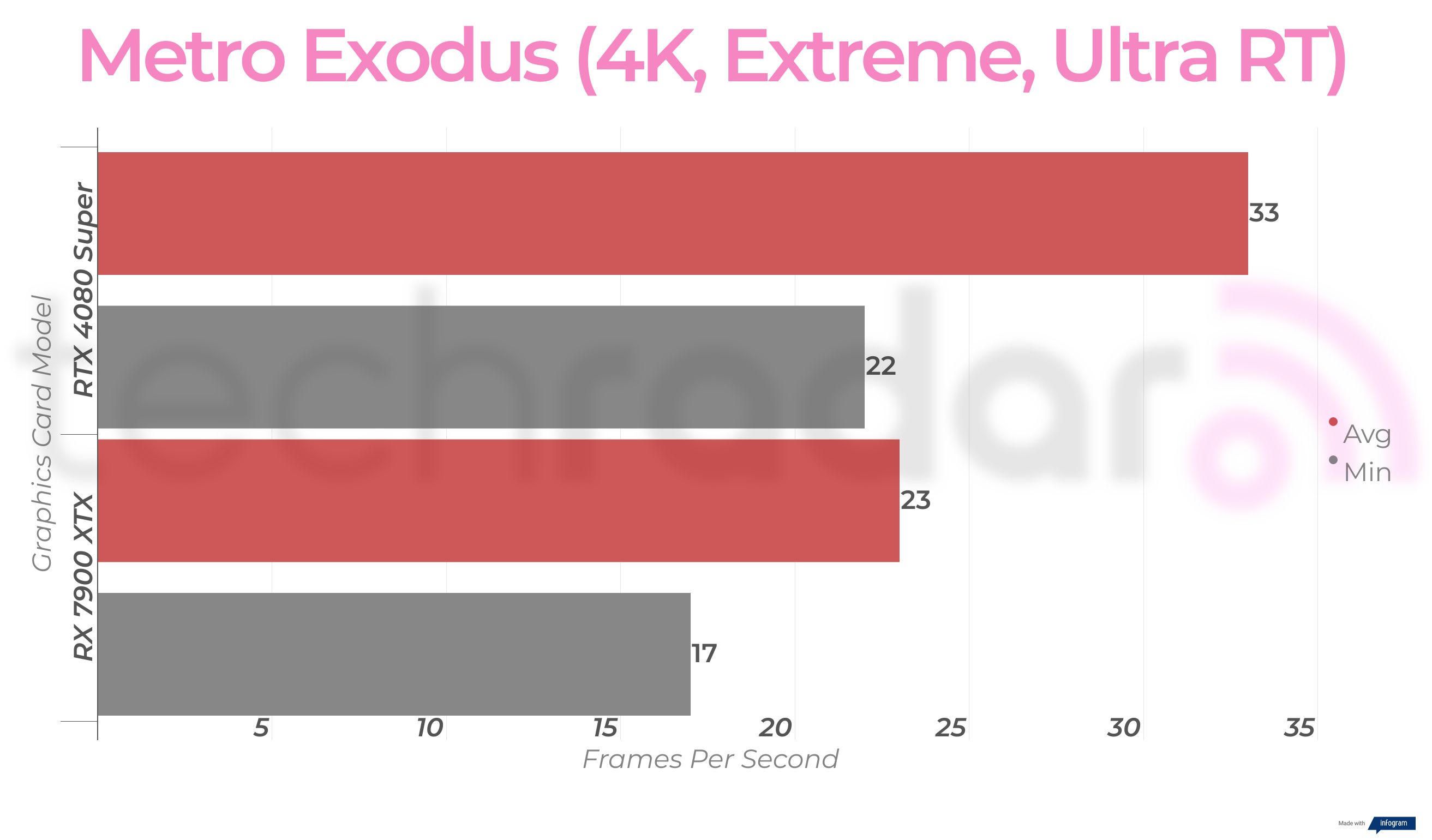
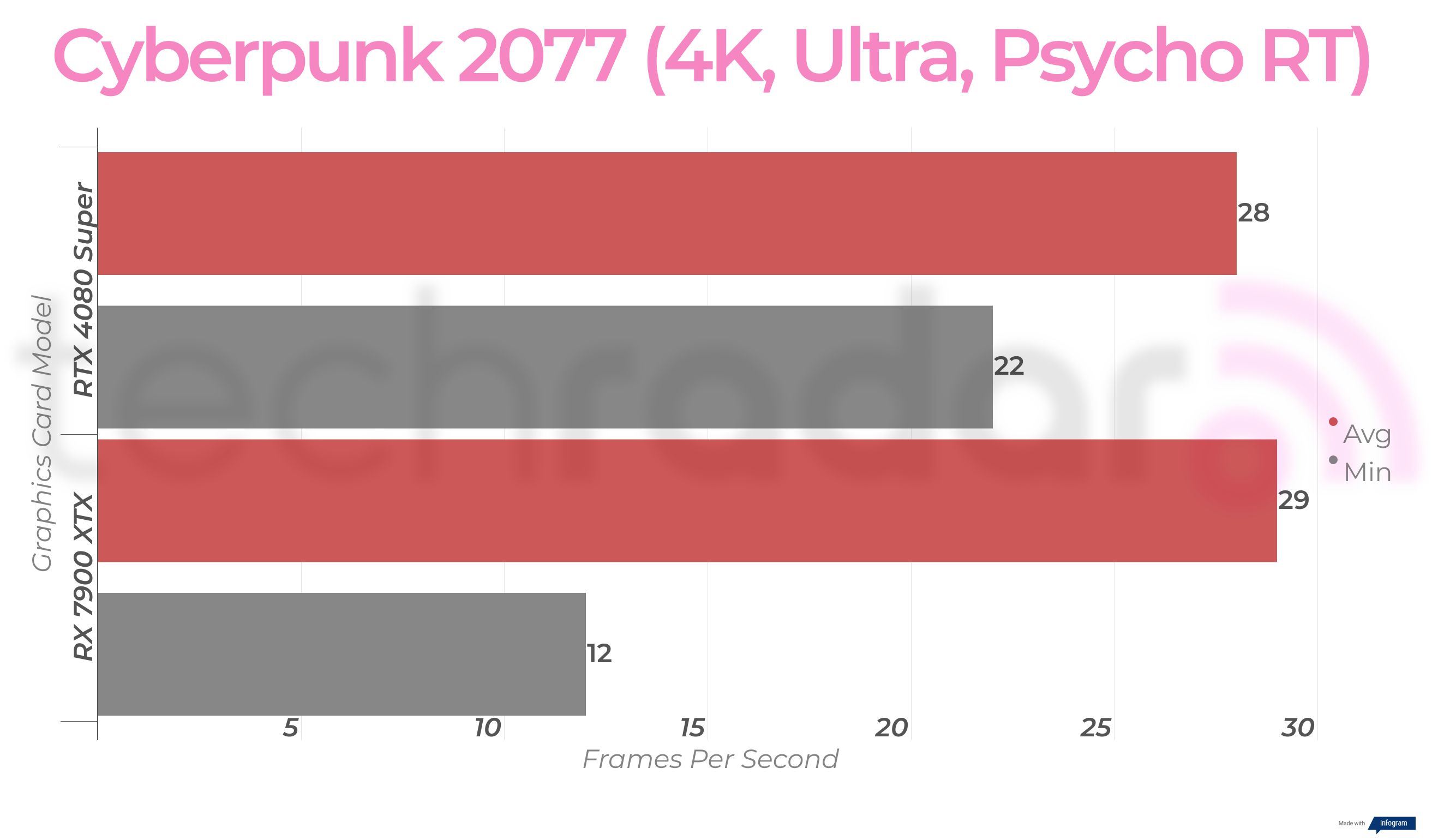
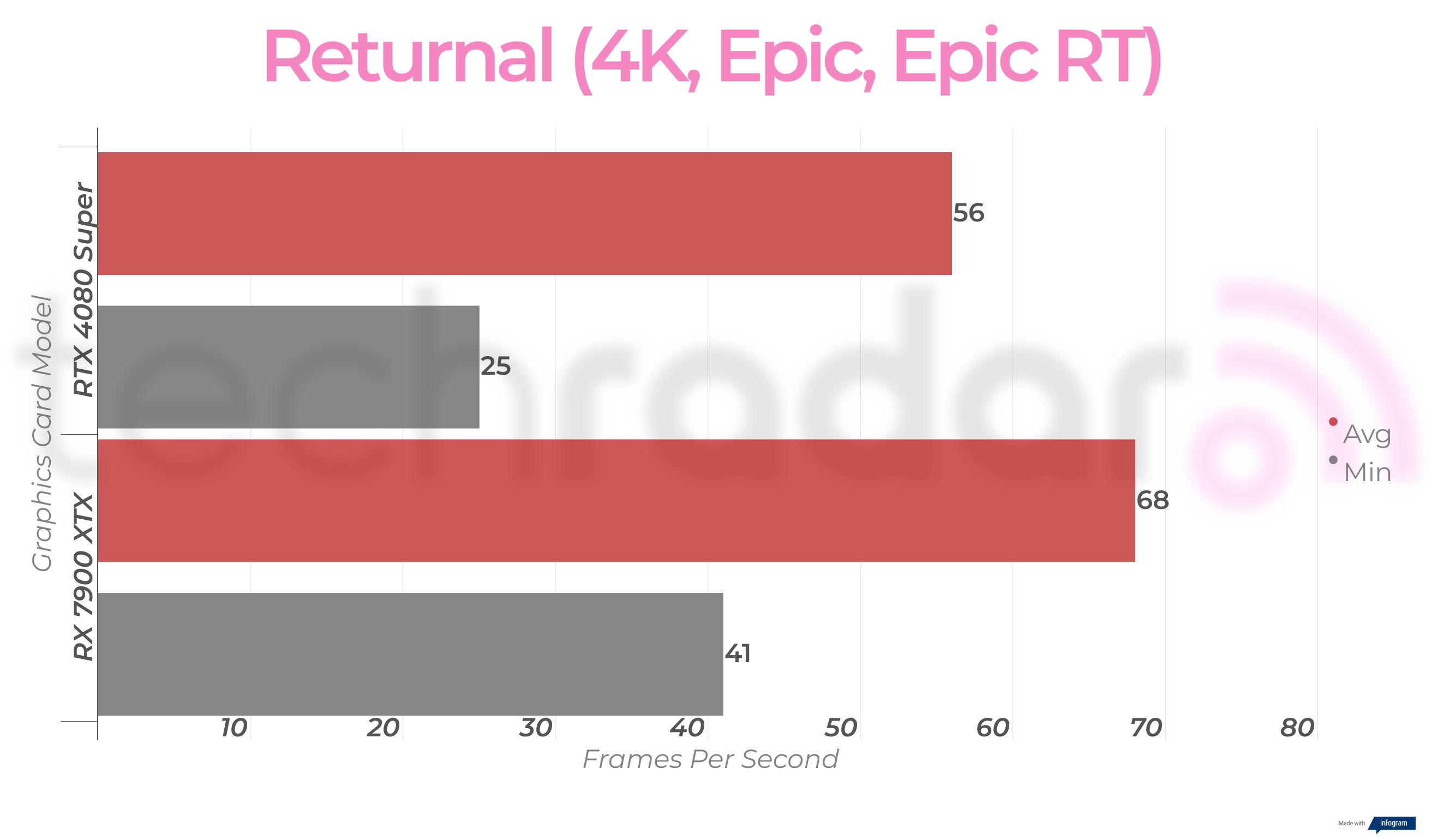
The extra VRAM, larger bandwidth, and bigger memory bus gives the RX 7900 XTX a slight advantage in terms of raw graphical prowess. This is evidenced in the native performance of Cyberpunk 2077 in 4K which averaged 60fps without ray tracing and 29fps with RT Psycho on.
That’s before switching on FSR upscaling which saw figures jump to 94fps without ray tracing but just 41fps with the tech dialed up all the way. Returnal at Epic settings achieved an average of 94fps without RT and 56fps with Epic ray tracing enabled. FSR saw a boost to 159fps and 102fps, too.
From our testing, it’s clear that despite the slower GDDR6 VRAM used, the AMD RX 7900 XTX pulls ahead slightly when it comes to raw processing power but trips the landing where ray tracing is concerned. Nvidia’s ray tracing prowess hasn’t quite been dethroned by RDNA 3, but Team Red’s flagship with its second-generation RT hardware does a respectable job for its pricing, though.
- Winner: RX 7900 XTX
Which one should you buy?
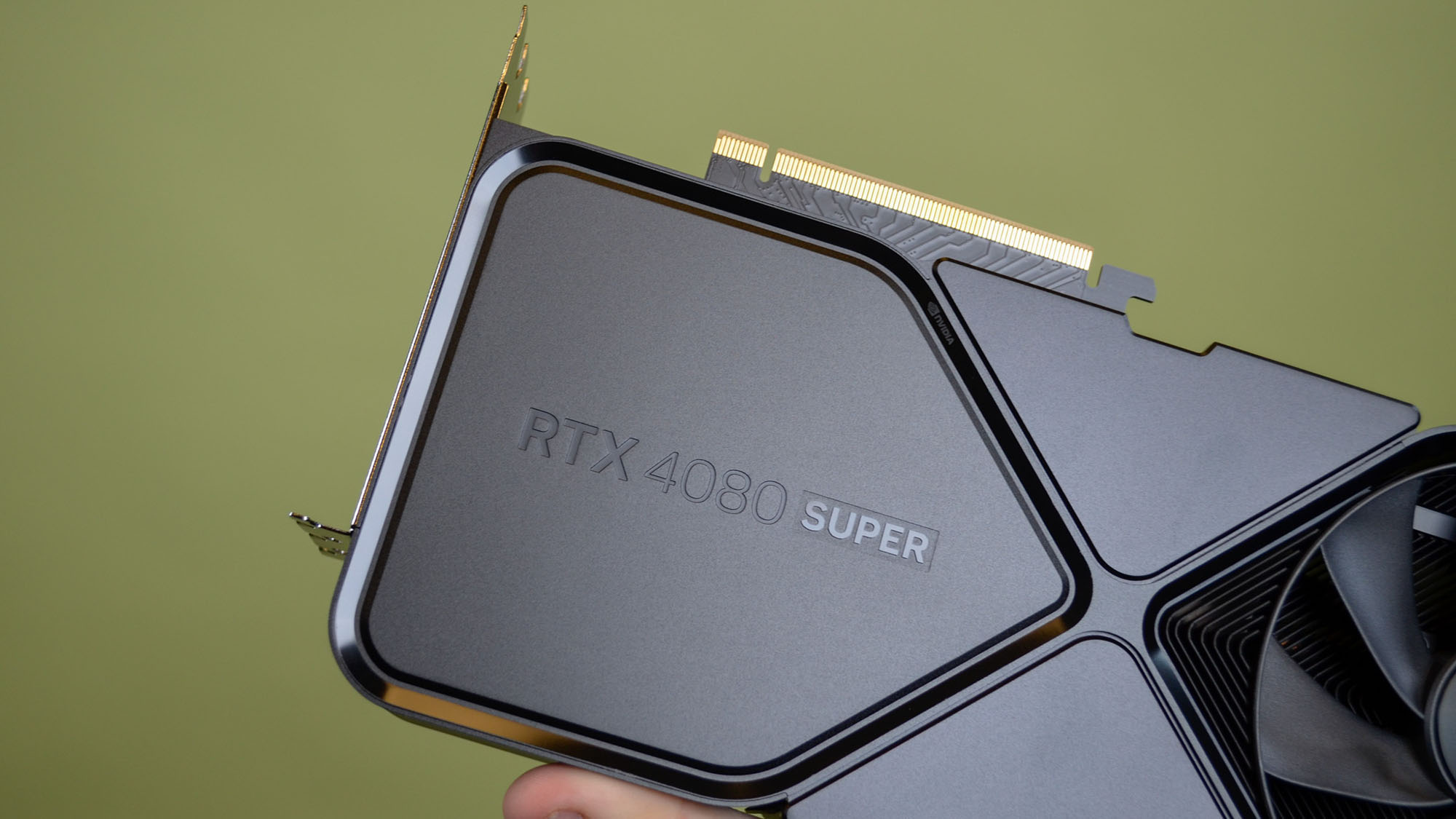
Considering the fact that the RTX 4080 Super and RX 7900 XTX start at the exact same price, the choice between them is ultimately going to come down to how crucial ray tracing prowess is to your gaming setup.
If you’re someone who wants to game in 4K without compromise in the latest games then the 24GB VRAM of Team Red’s card should give you a decent amount of overhead. However, if you want to try out ray and path tracing in 4K then you should consider the RTX 4080 Super instead.







